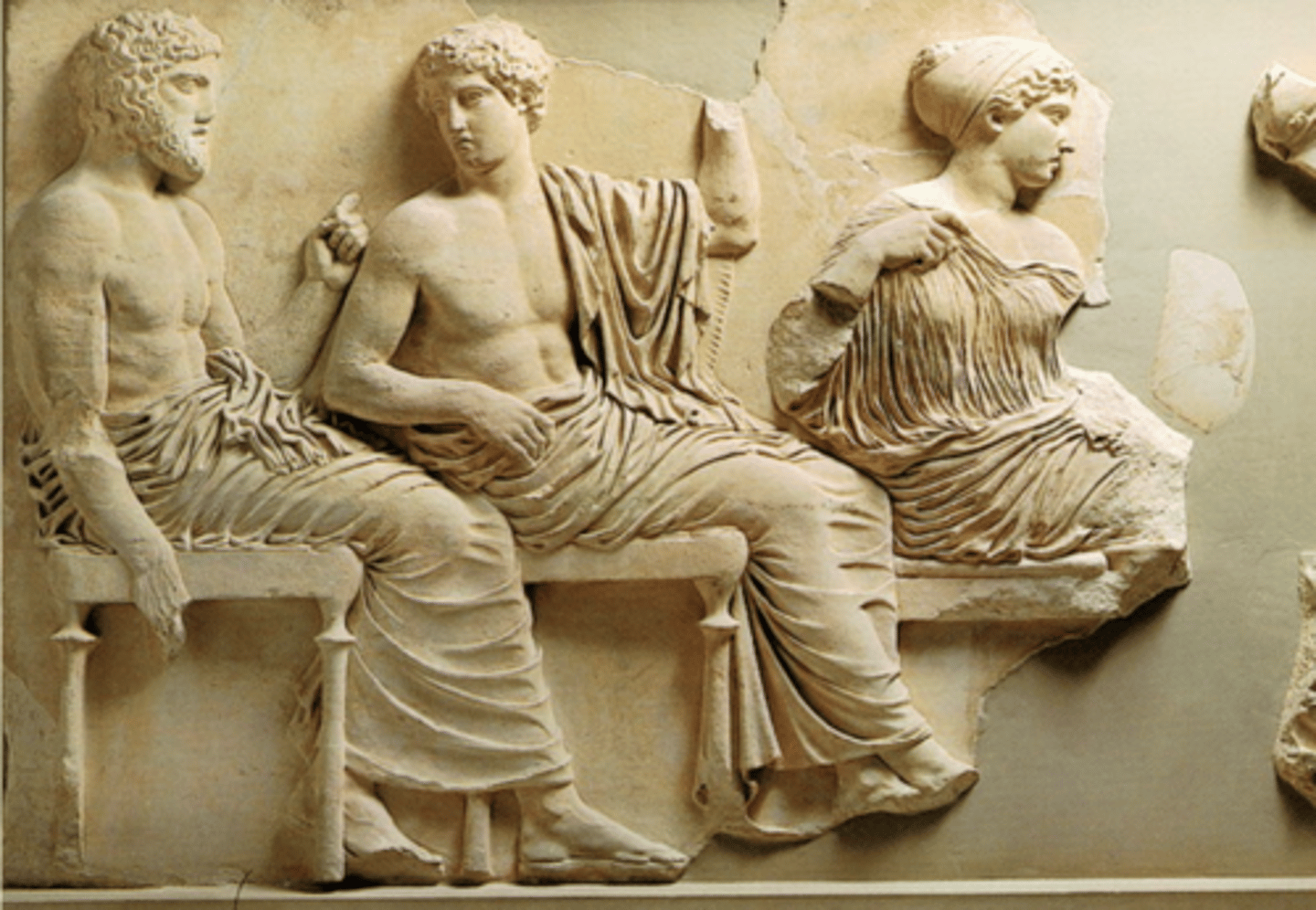CLCIV 101 Midterm
1/186
There's no tags or description
Looks like no tags are added yet.
Name | Mastery | Learn | Test | Matching | Spaced |
|---|
No study sessions yet.
187 Terms
Bronze Age Dates
3000-1150 BC
Dark Ages Dates
1150-700 BC
Archaic Period Dates
700-480 BC
Classical Period Dates
480-323 BC
Hellenistic Period Dates
323-30 BC
Indo-european
classification based on language not ethnicity, all migrated starting between black sea and caspian sea
Crete
largest island, first civilization
Mt. Olympus
home of the gods, tallest in Greece
Athens
main city in Greece
Sparta
rival of Athens, other main city
Thebes
tragedy that we read takes place there
Delphi
most important holy site
Discovery of Troy
discovered by Heinrich Schliemann in 1870
Discovery of Mycenae
discovered by Heinrich Schliemann in 1876
Discovery of Cnossus
discovered by Arthur Evans in 1899
Minoans
lived in crete
named after minos
many palaces
3000-1400 BC
not warriors, traders
Palace at Cnossus (Minoan)
Minoans/Crete
Open palaces, economic hub
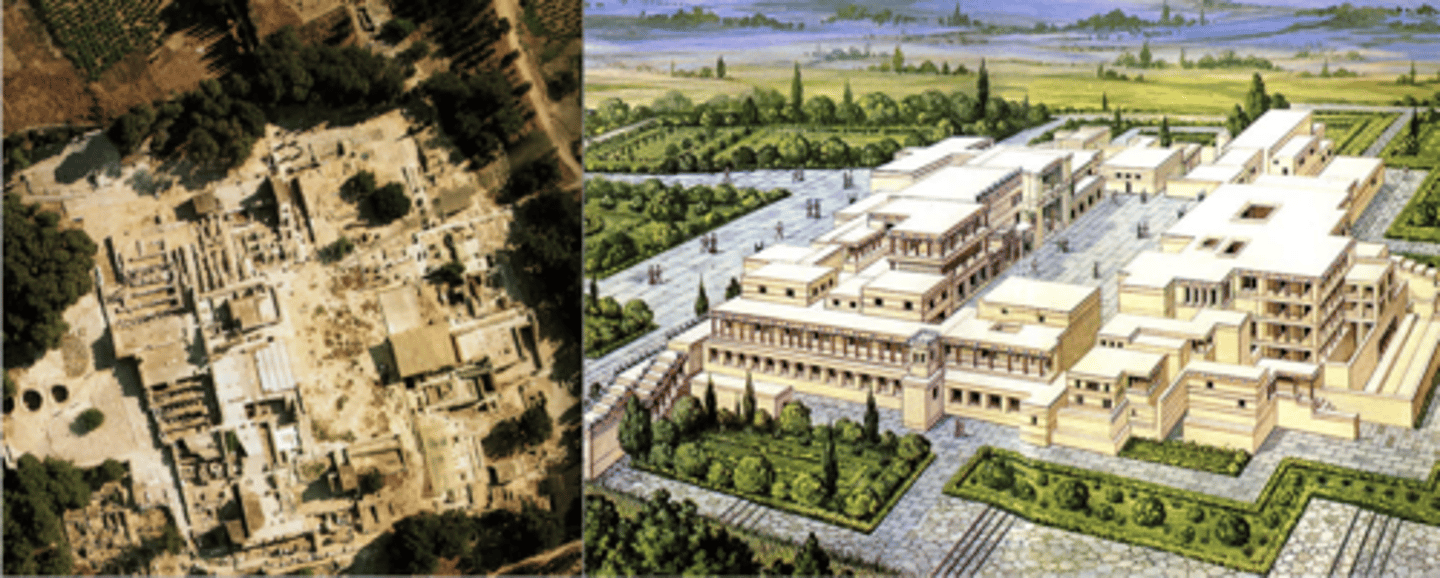
Cnossus Throne Room (Minoan)
Minoans/Crete
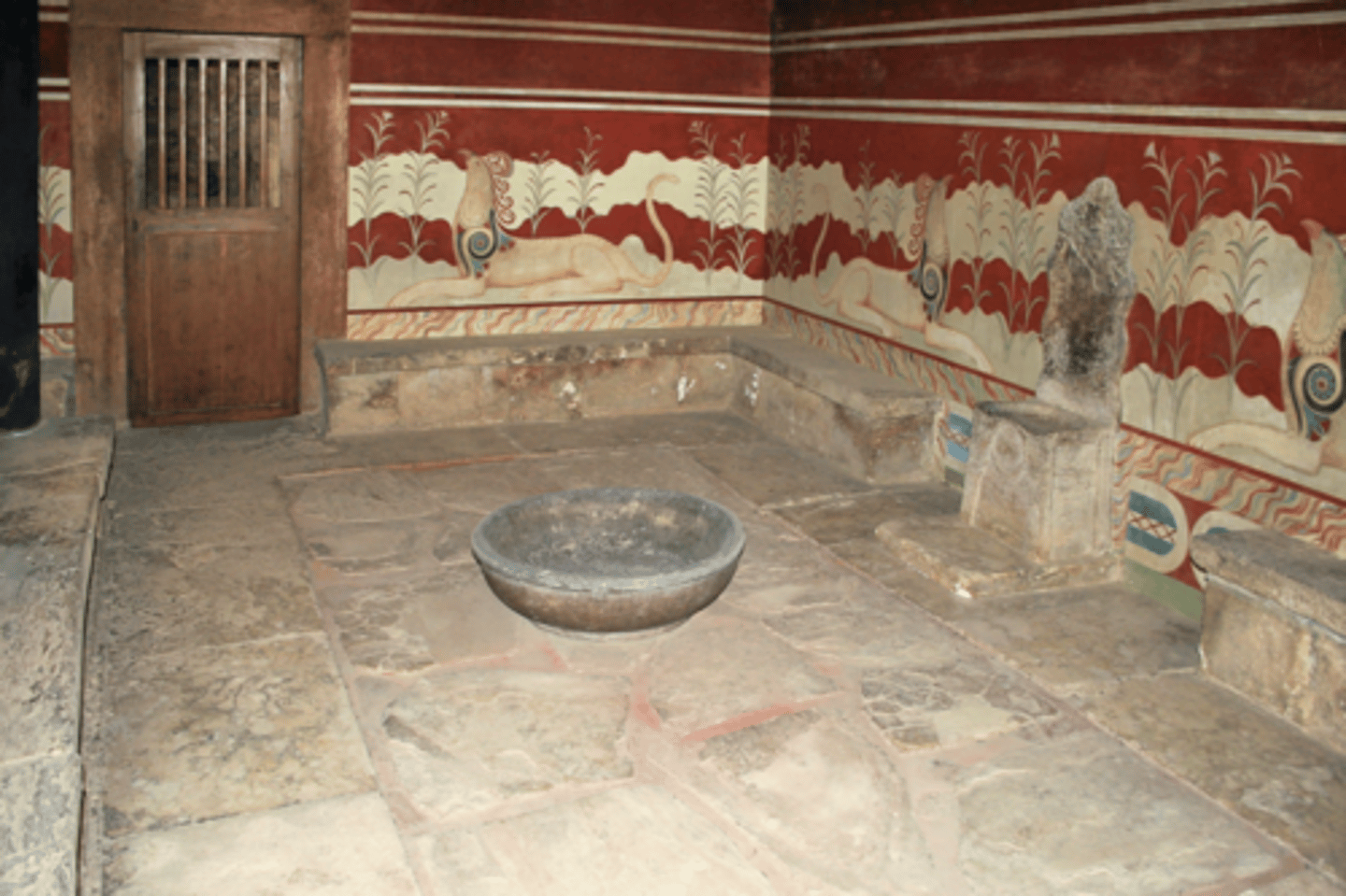
Cnossus Queen's Megaron/Great Room (Minoan)
Minoans/Crete
Sea people
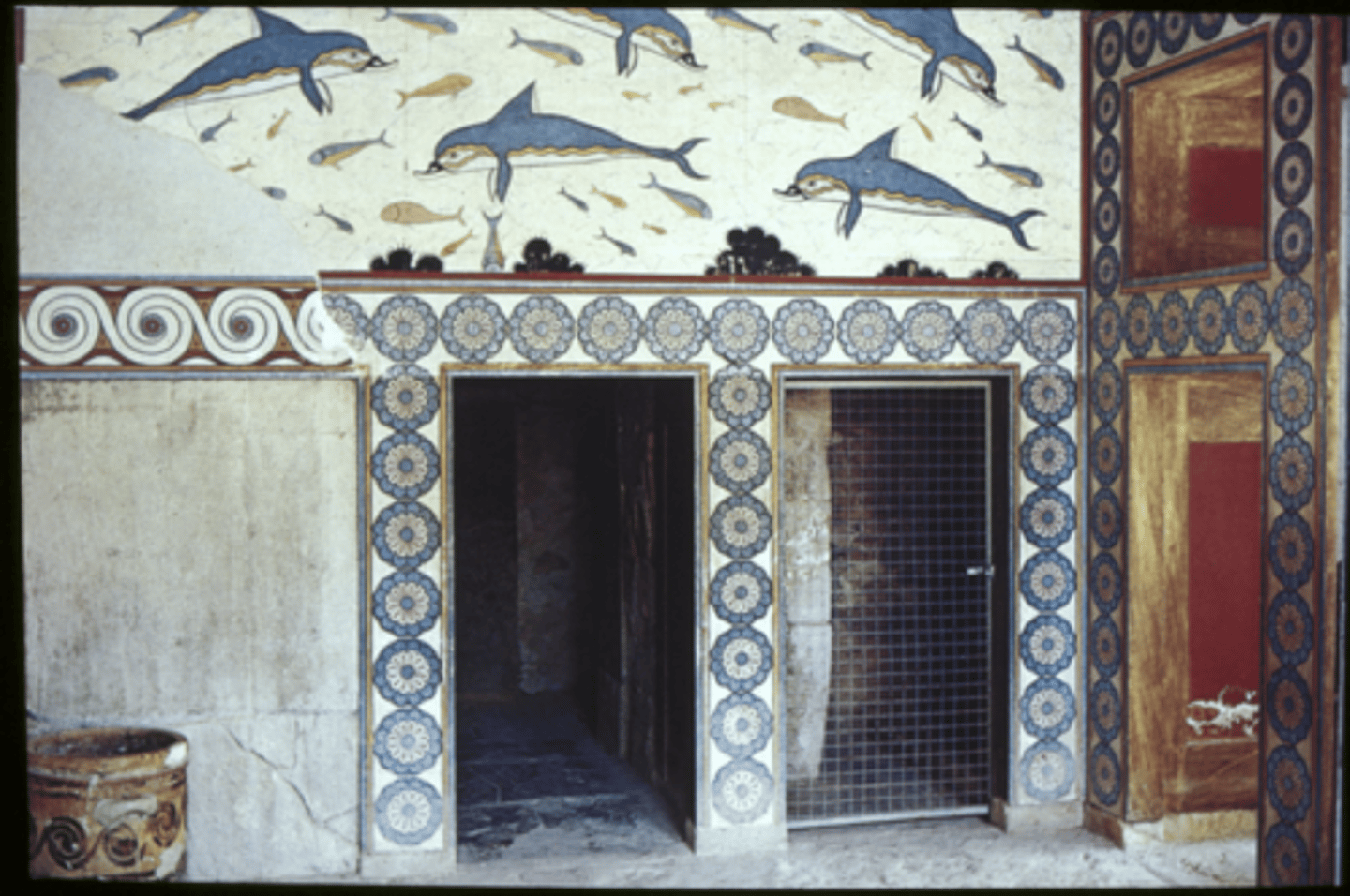
Cnossus Halls and Stairs (Minoan)
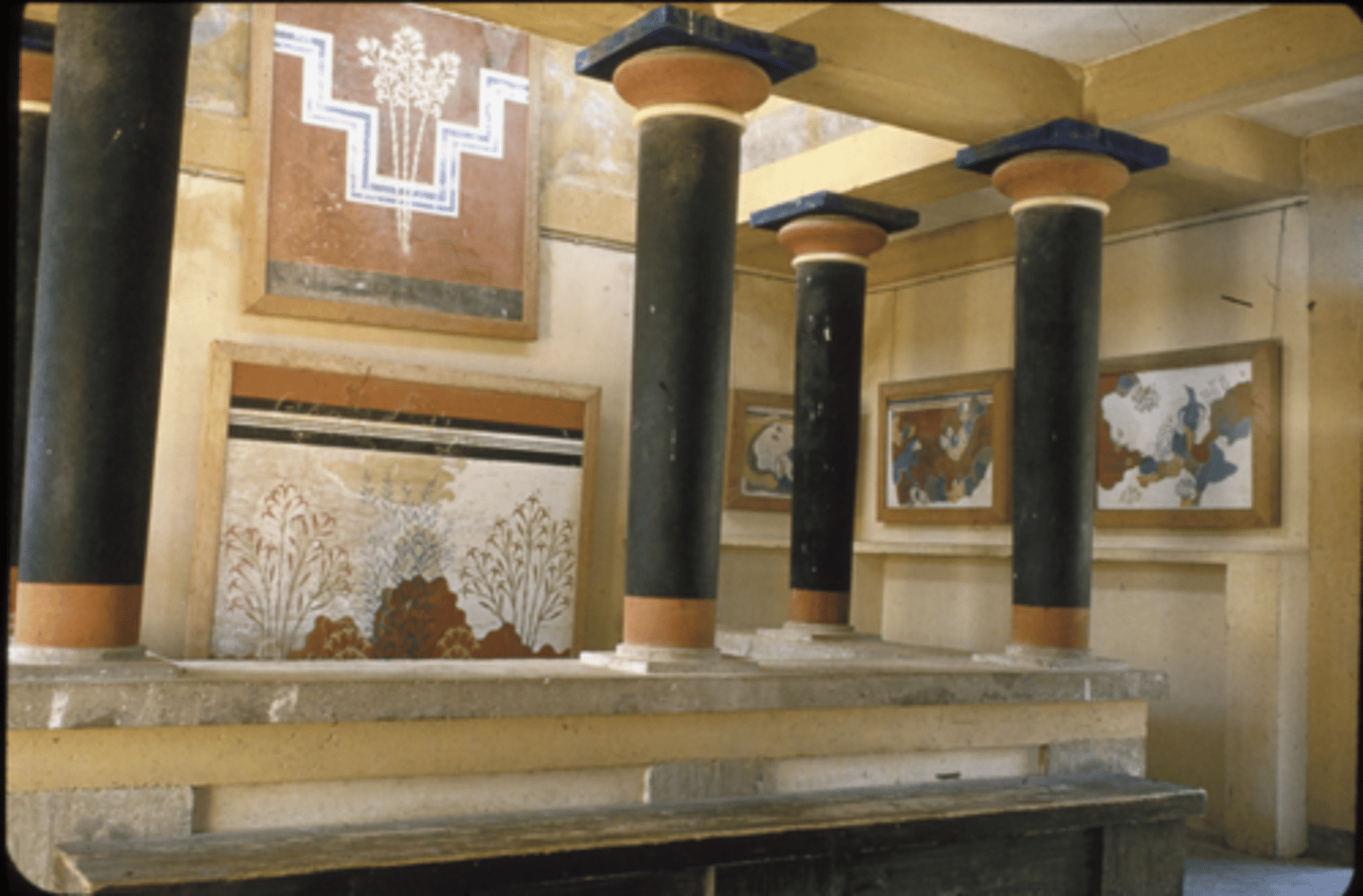
Palace Economy
products stored in the palace and then redistributed
Cnossus Storage Room (Minoan)
Minoans/Crete
Palace economy

Thalassocracy
power on the sea
The Ship Procession in Akrotiri (Minoan)
Minoans/Crete
Thalassocracy

Fresco from Akrotiri (Minoan)
Minoans/Crete
Thalassocracy
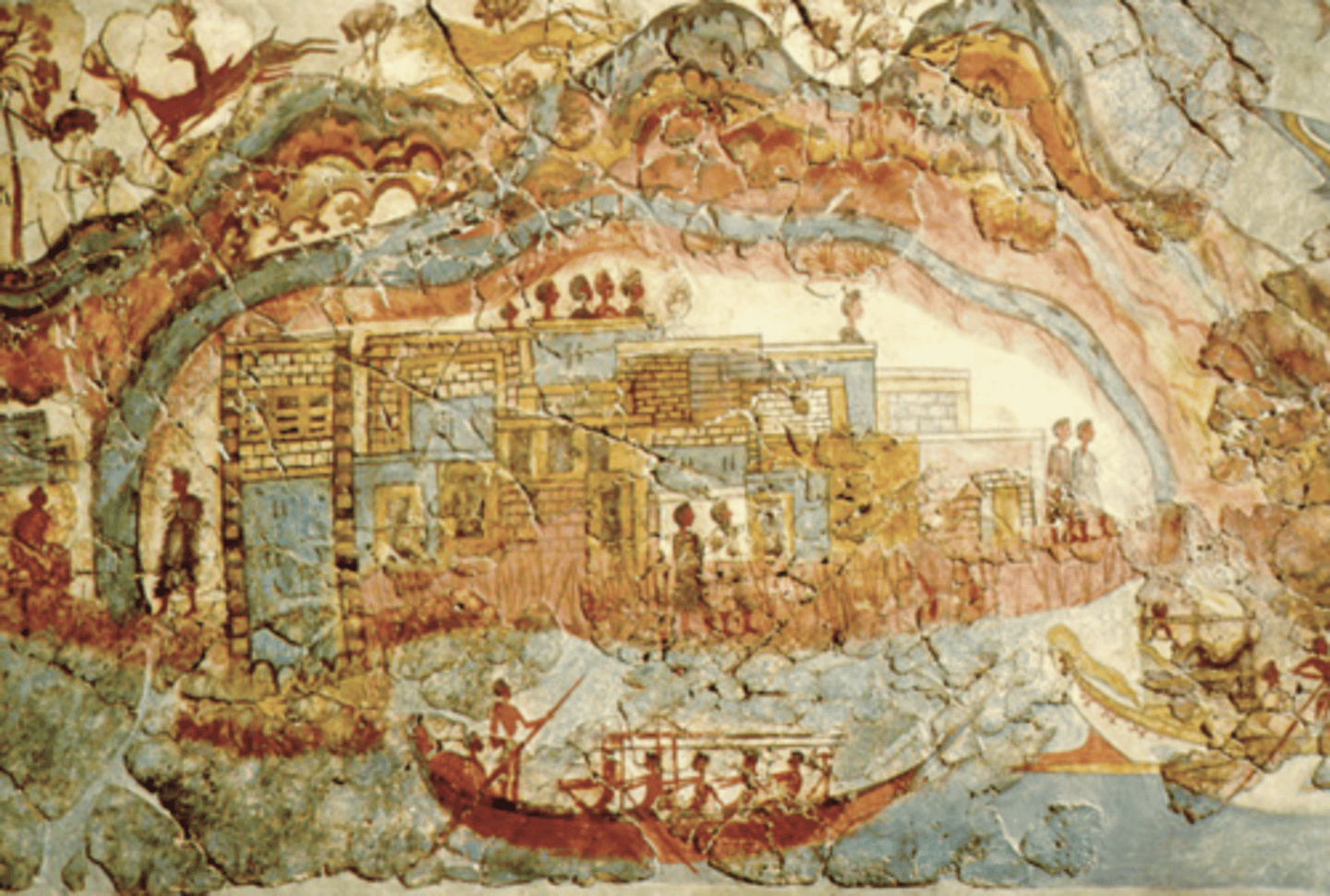
The so-called Parisienne (Minoan)
Minoans/Crete
Fresco
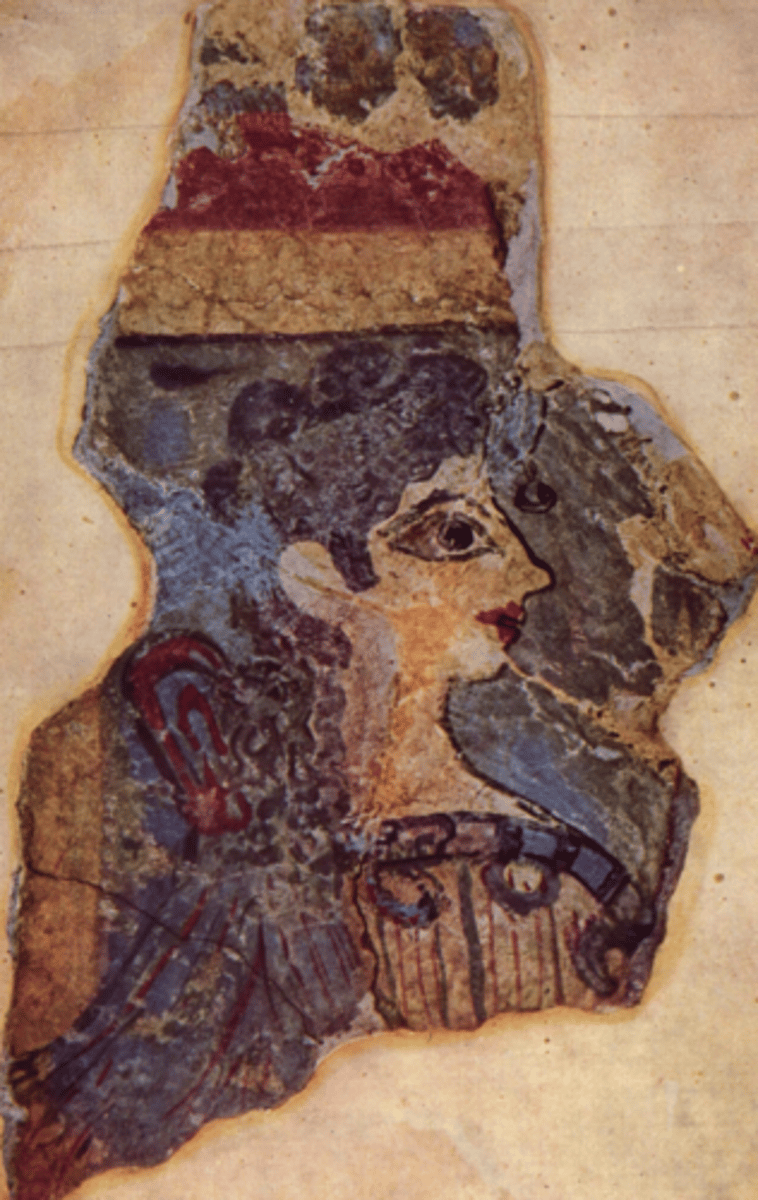
Bees Pendant from Mallia (Minoan)
Minoans/Crete
Very intricate/advanced
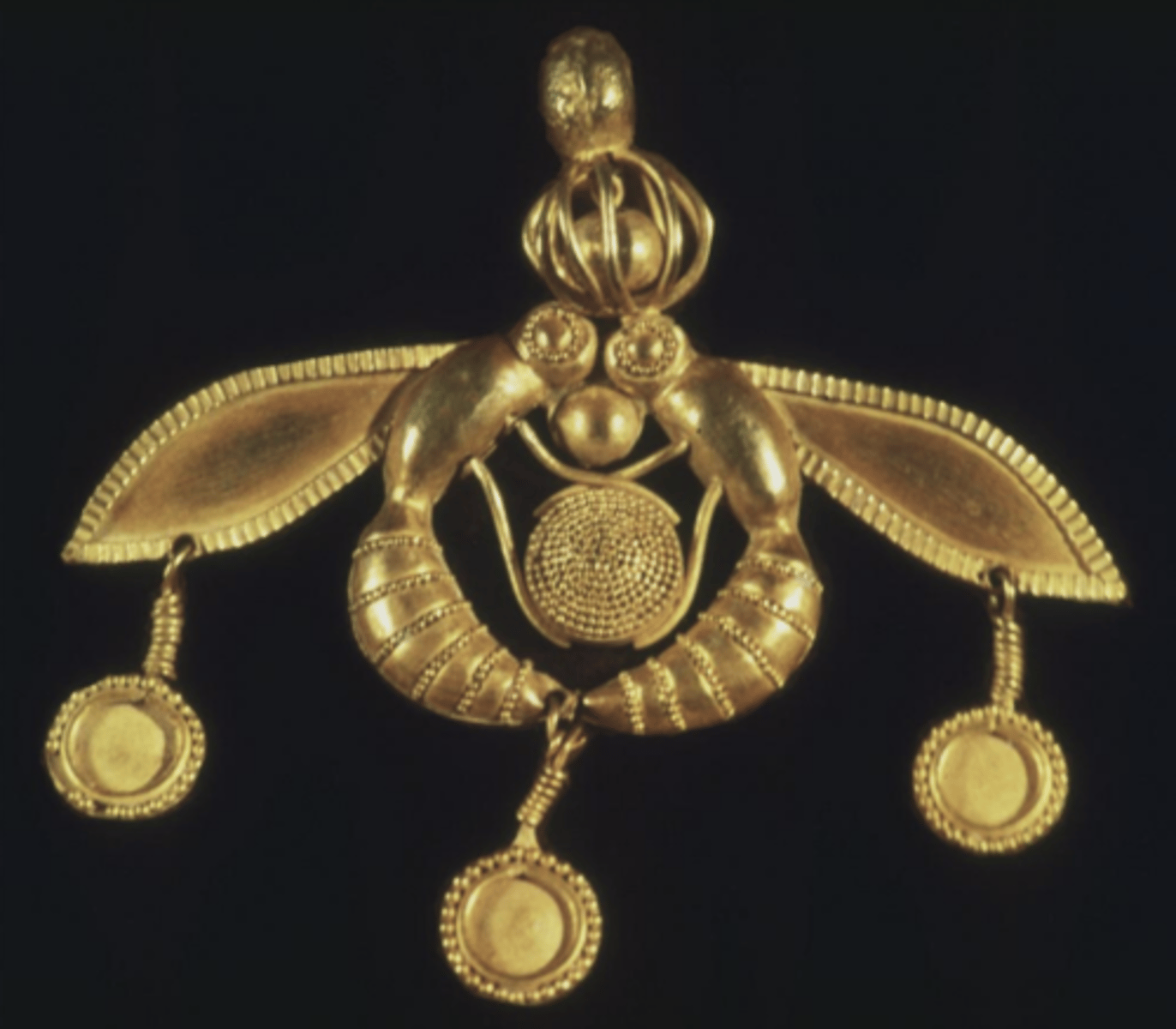
Statuette of the Snake Goddess (Minoan)
Minoans/Crete
Main goddess of religion, fertility goddess
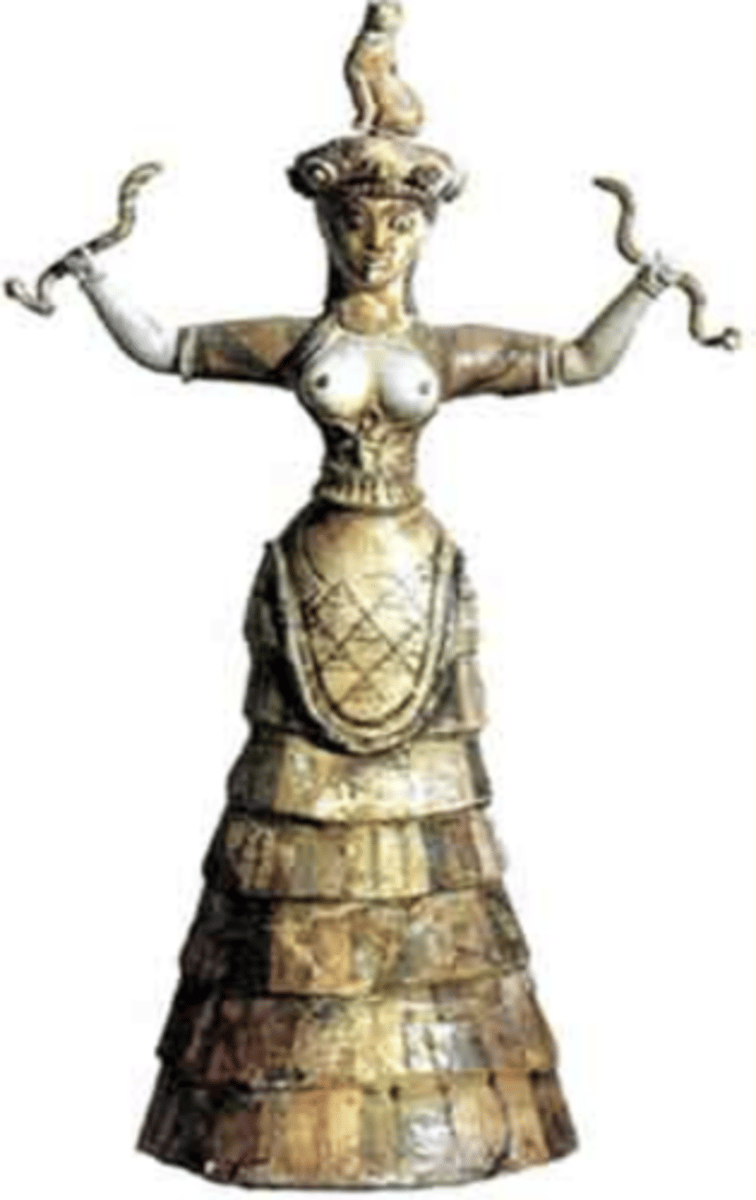
Bull Jumping Fresco Cnossus (Minoan)
Minoans/Crete
Bulls very important in Crete
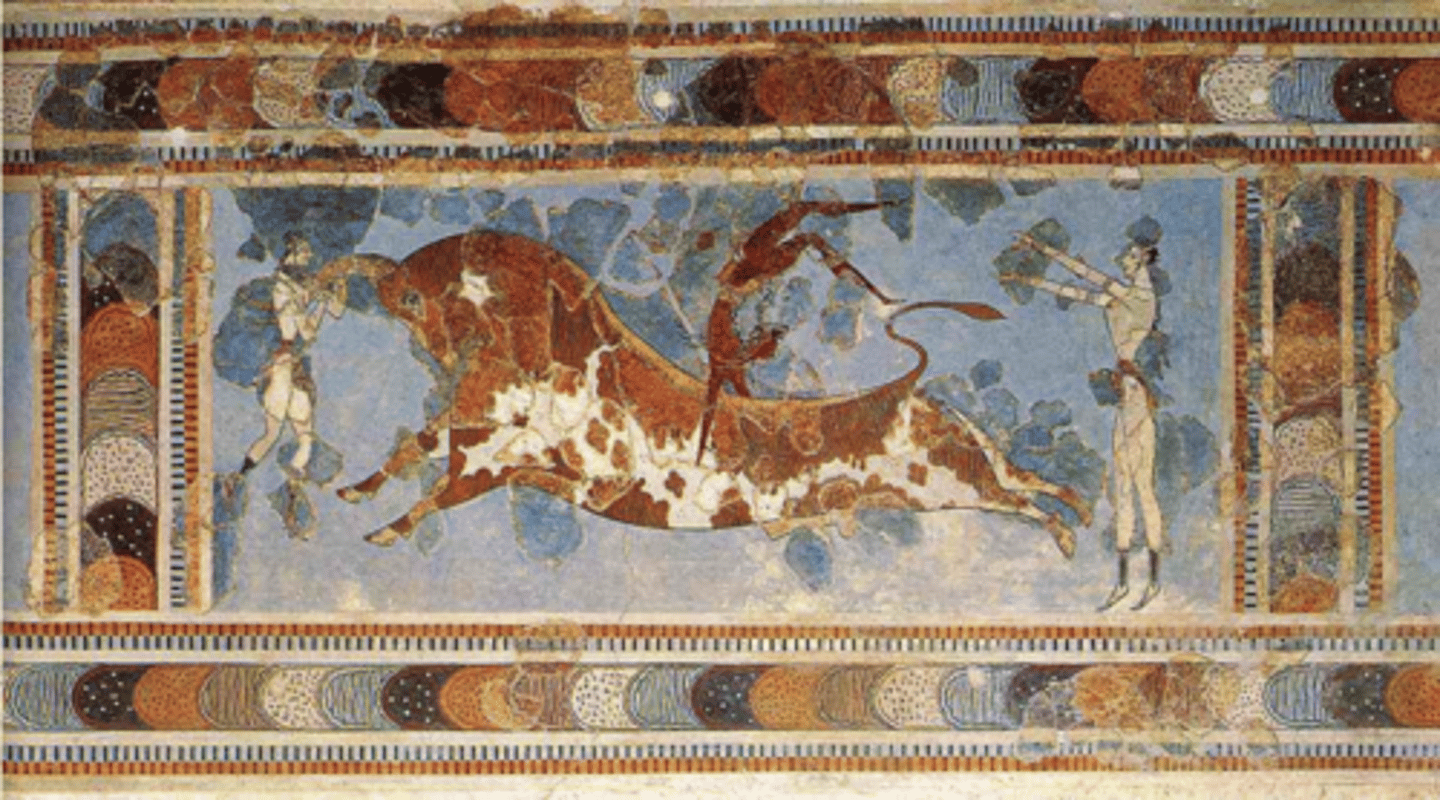
Rhyton/drinking cup in the shape of a bull's head (Minoan)
Minoans/Crete
Bull very important, wine very important
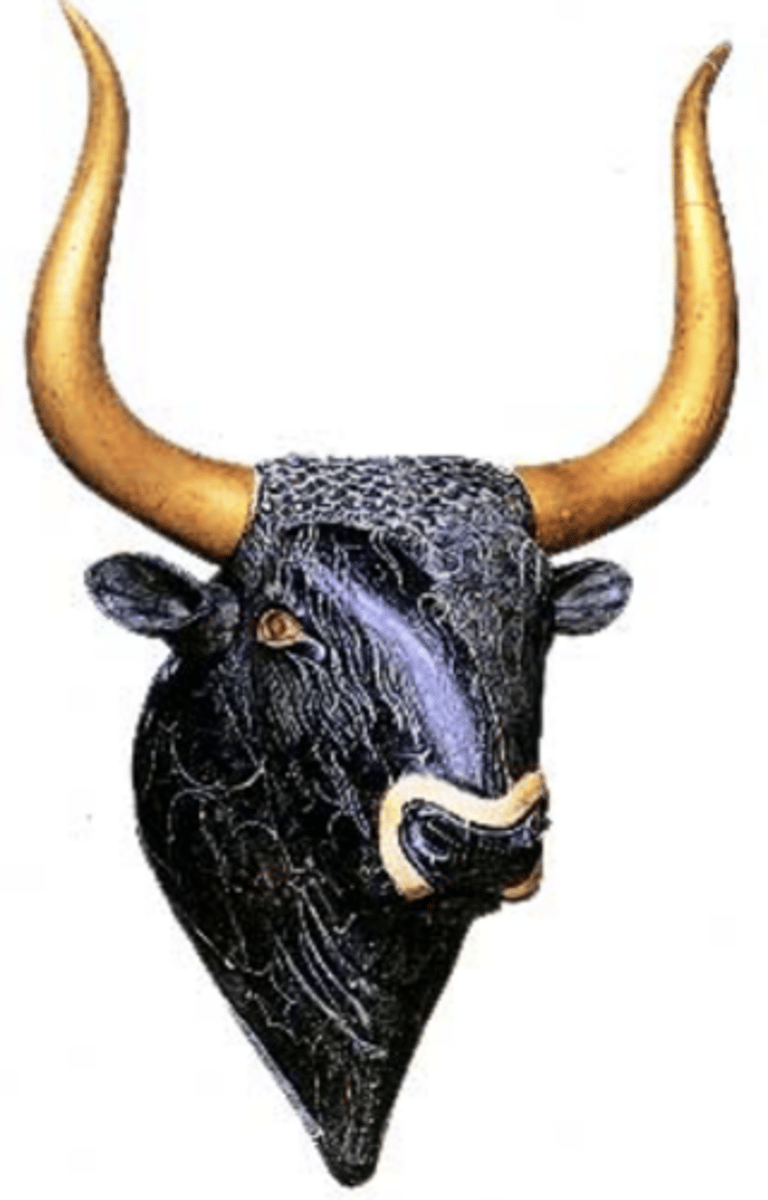
Horns of Consecration (Minoan)
Minoans/Crete
Bull very important
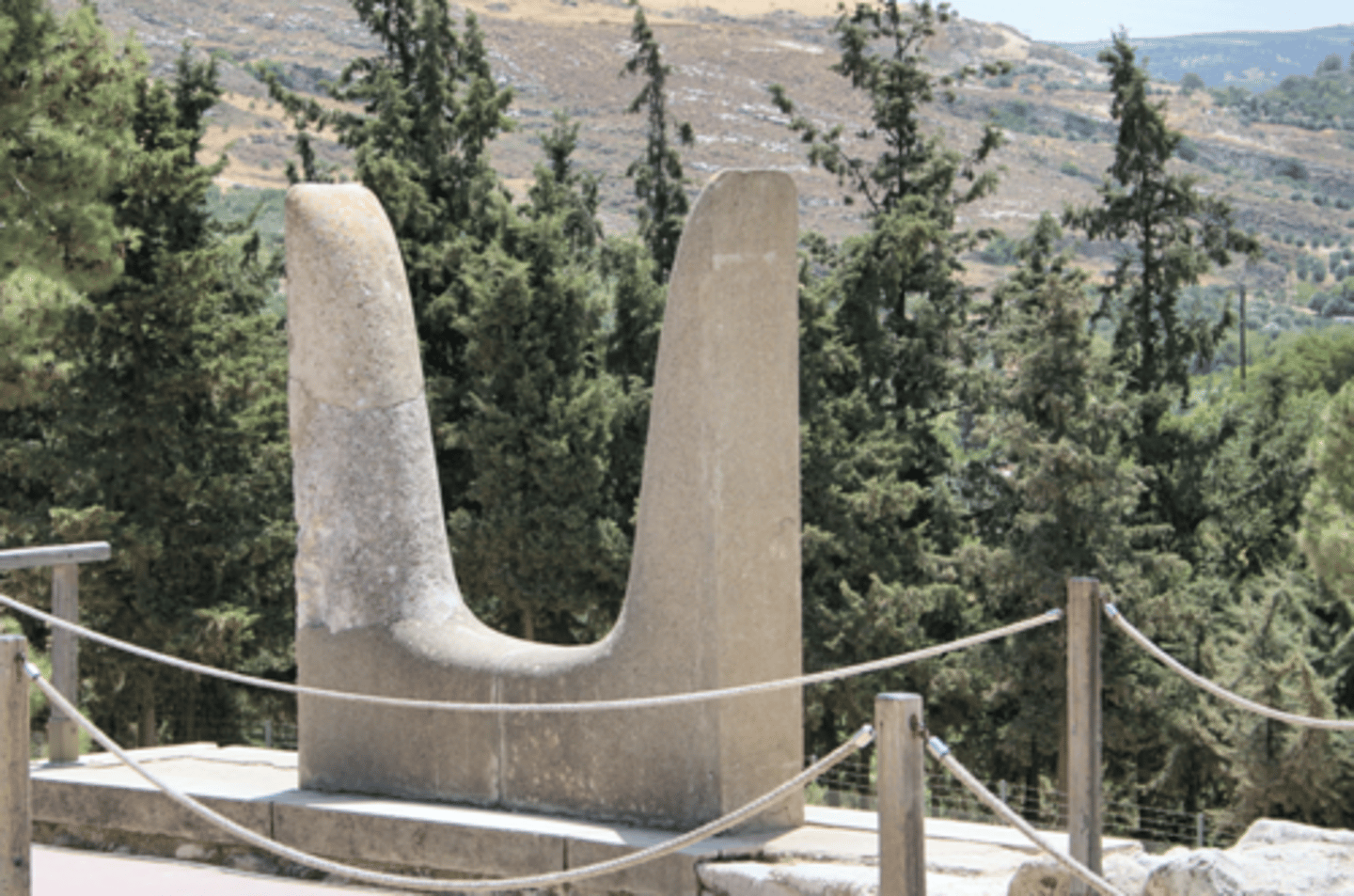
Sarcophagus with bulls and horns of consecration (Minoan)
Minoans/Crete
Bull very important
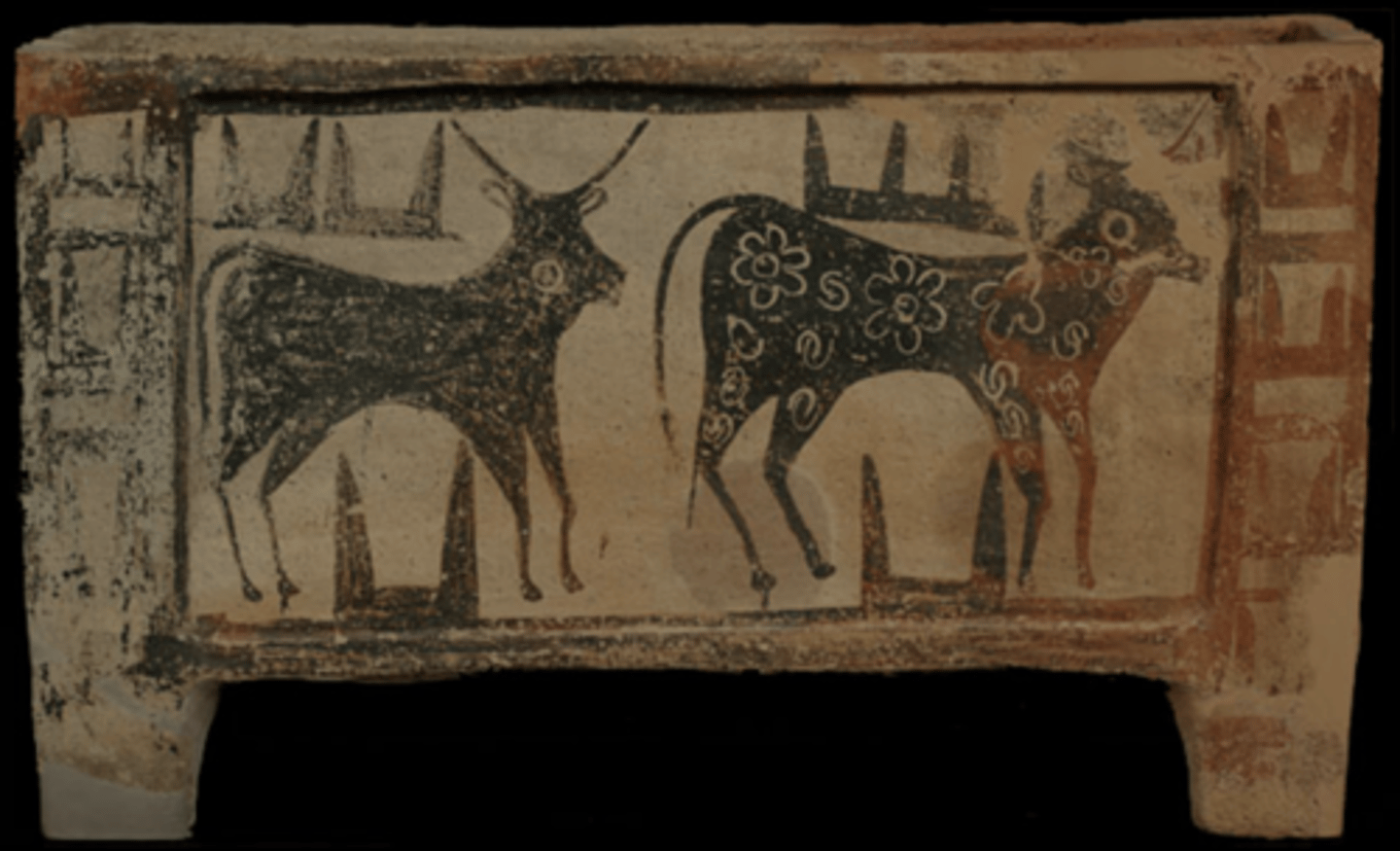
Thesseus and the Minotaur
takes palce on Crete
based on ritual importance of bull
cnossus looked like a maze
Mycenaeans
1600-1150 BC
Named after Mycenae
Fortified citadels
Independent kingdoms
Conquest of Crete (1500-1450 BC)
Mycenae (Mycenaean)
Mycenaeans
Fortified citadels
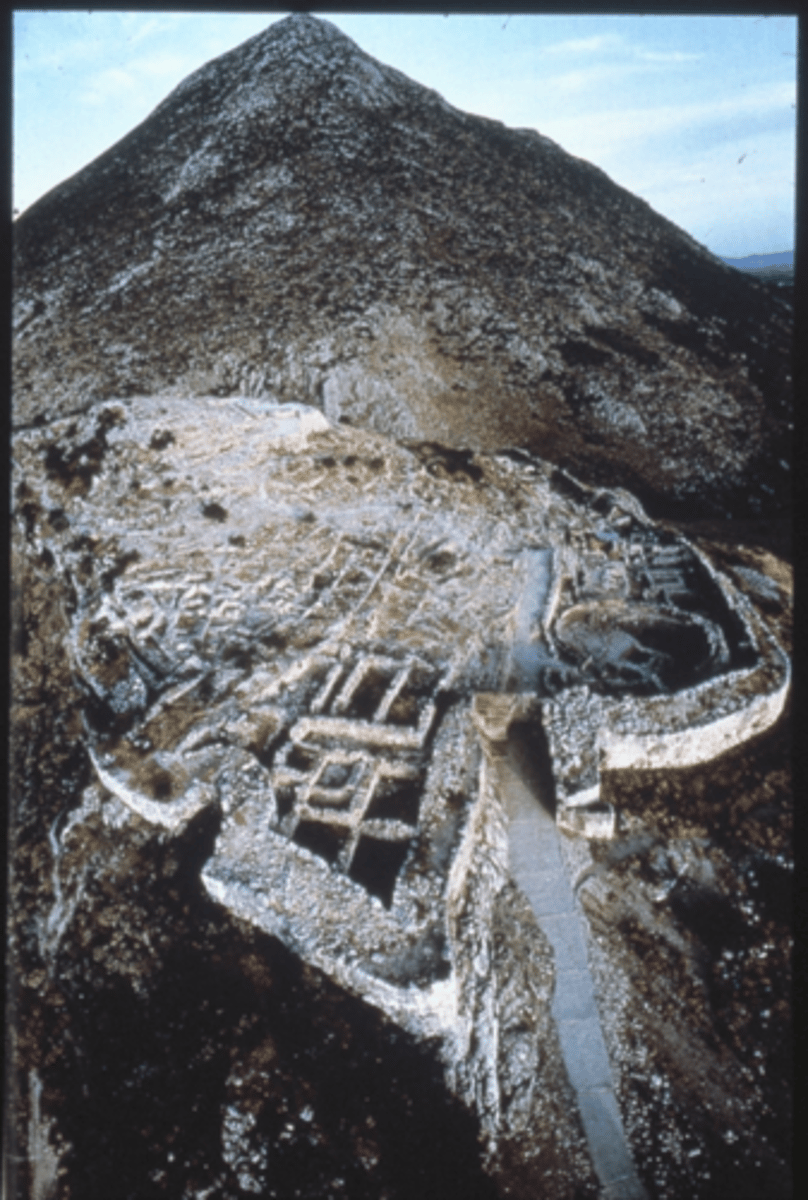
Mycenea Cyclopean Wall (Mycenaean)
Mycenaeans
Walls for protection
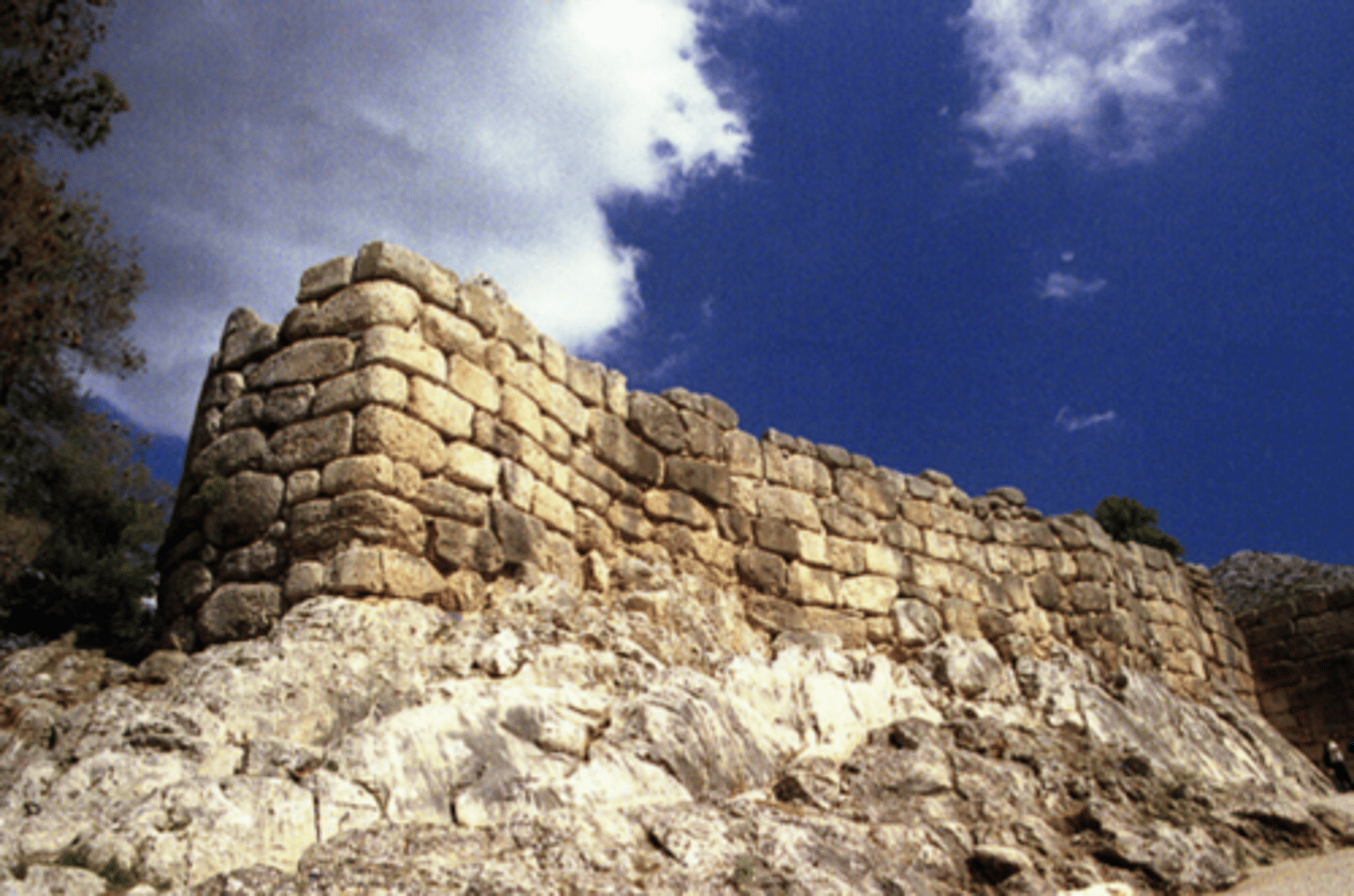
Mycenae Lion Gate (Mycenaean)
Mycenaeans
Walls for protection
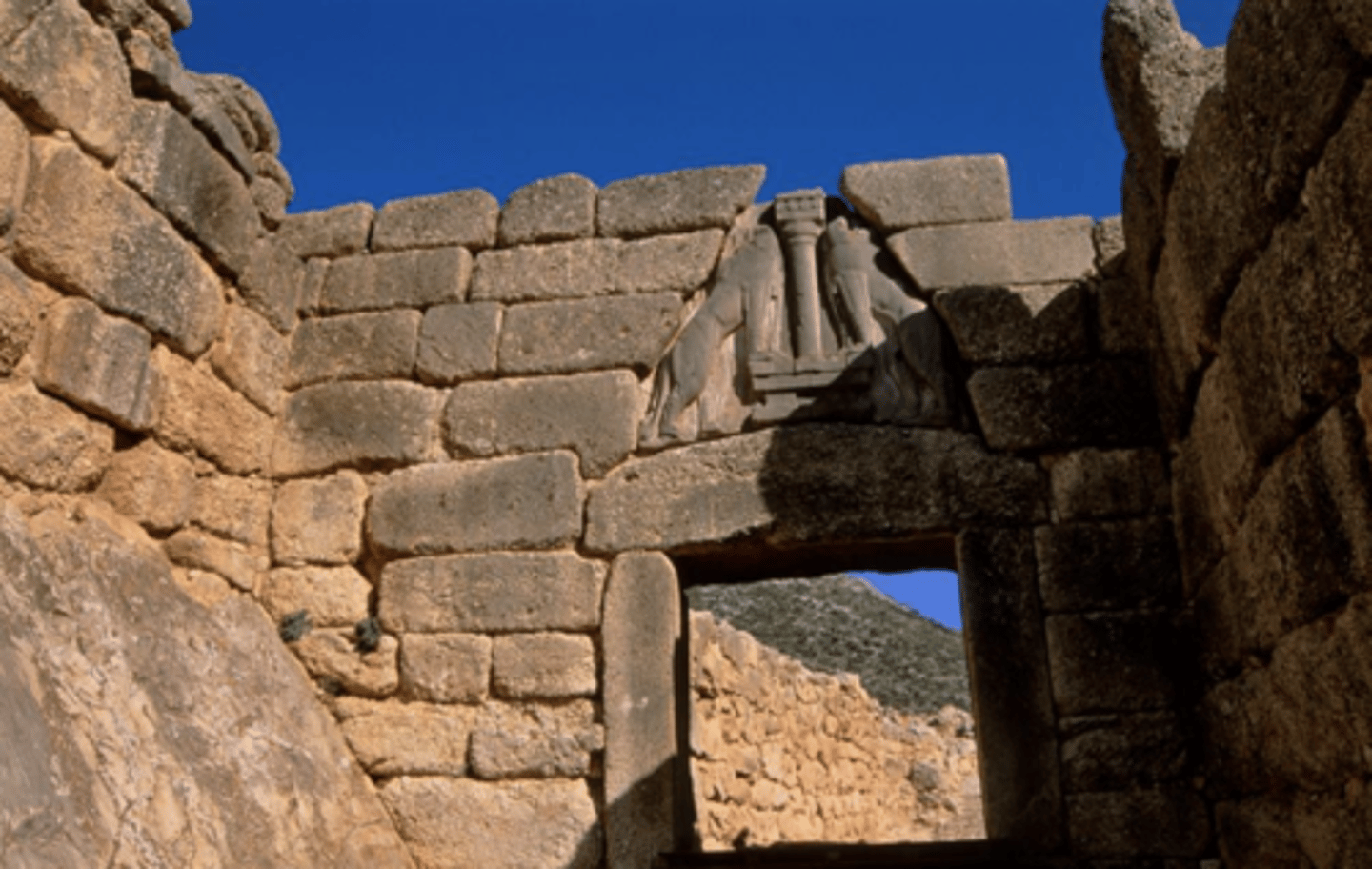
Mycenae, the so-called Treasury of Atreus (Mycenaean)
Mycenaeans
Filled with precious artifacts, honeycomb
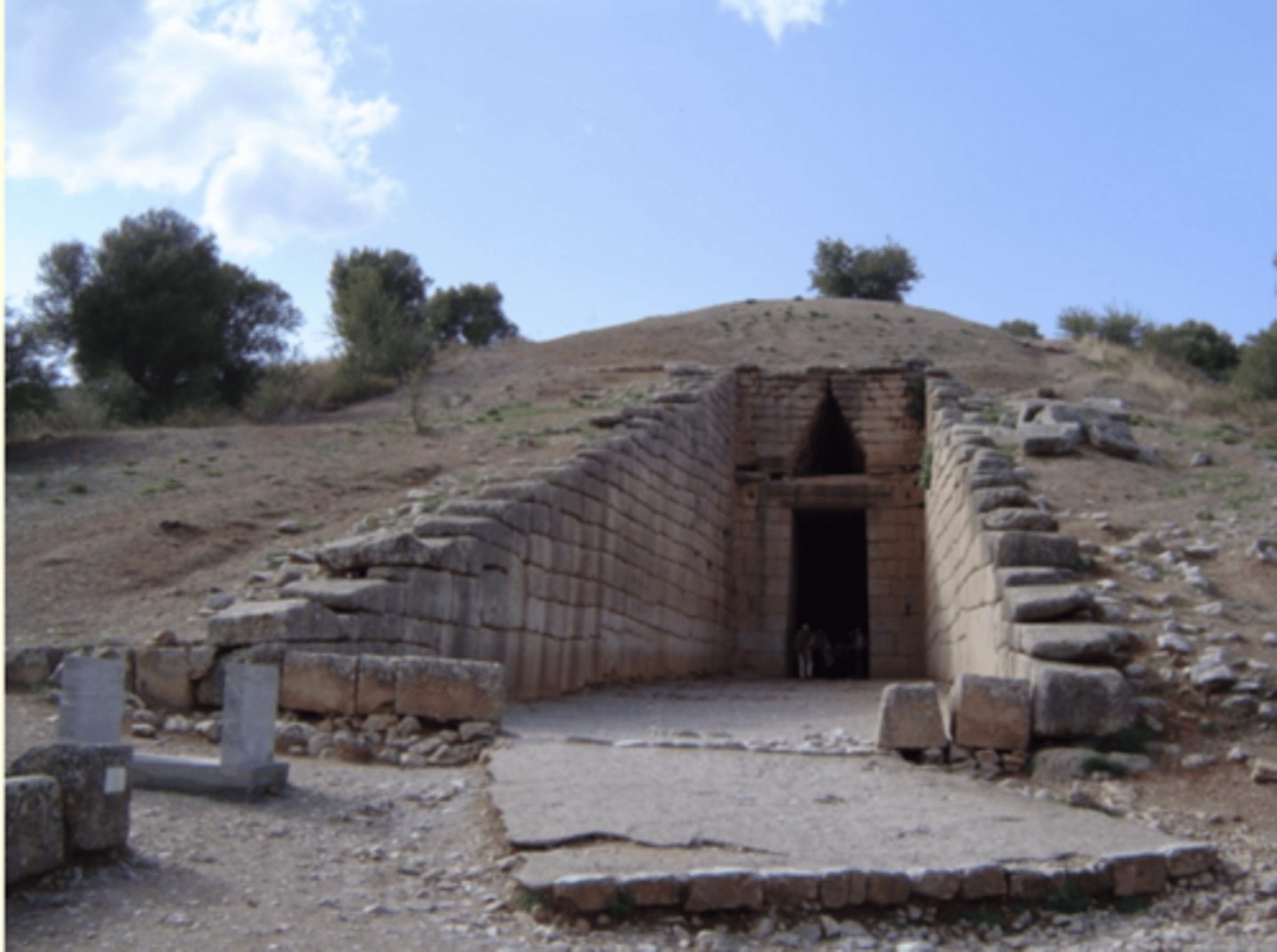
Seal with Goddess and Demons from
Tiryns (Mycenaean)
Mycenaeans
Very intricate artistry
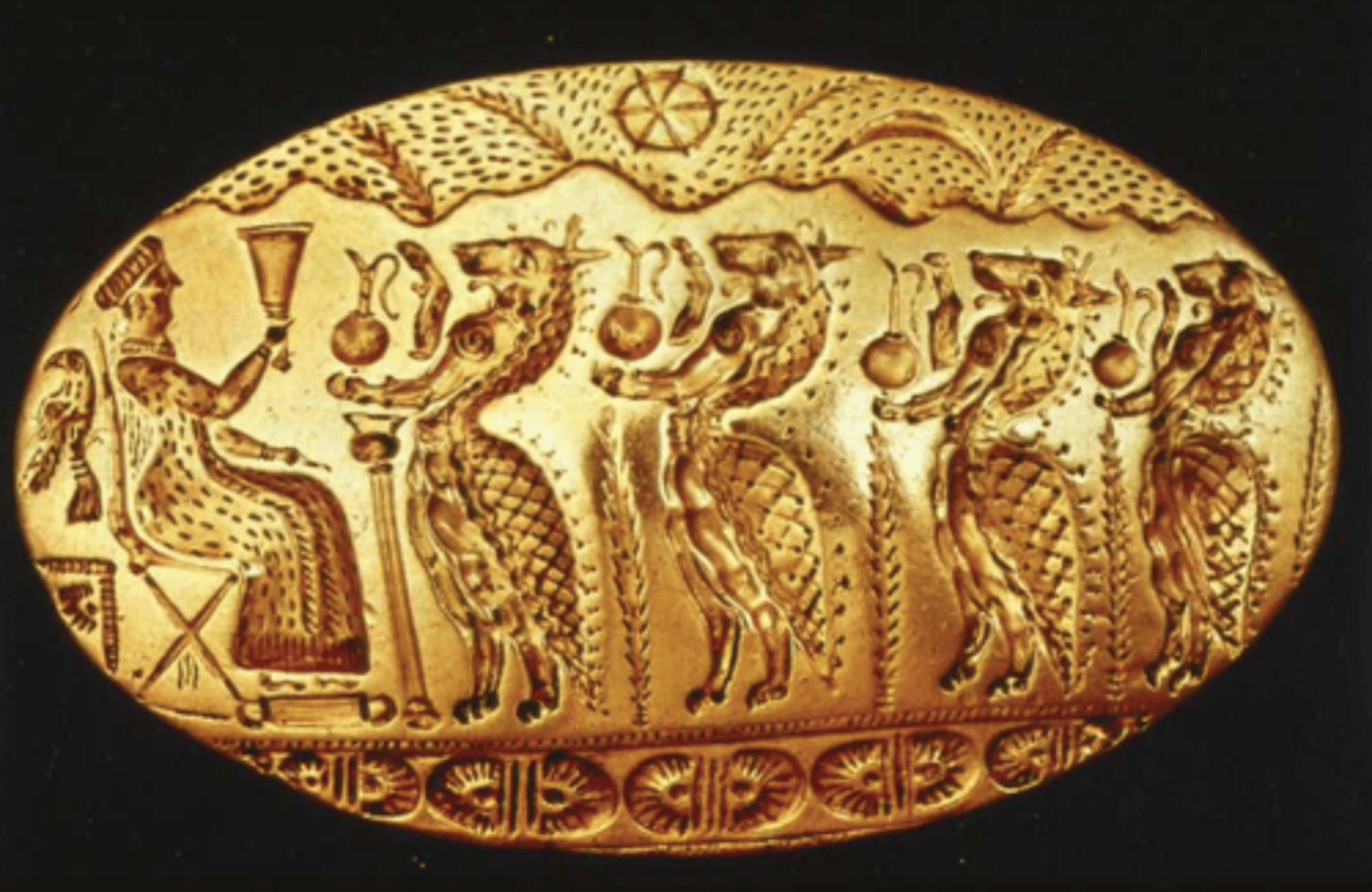
Goblet from Vaphio (Mycenaean)
Mycenaeans
Very intricate artistry
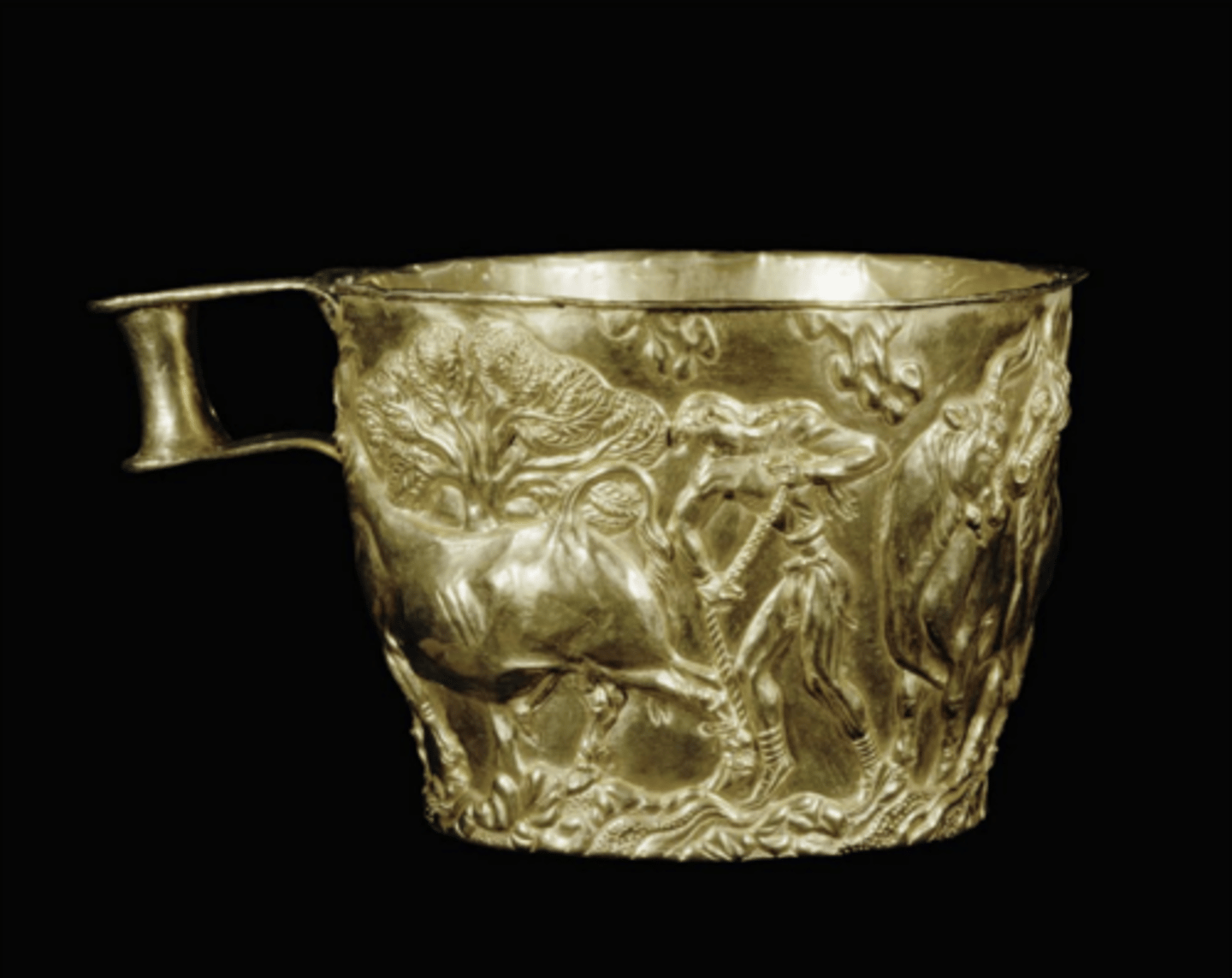
Dagger blade from Mycenae (Mycenaean)
Mycenaeans
Very intricate artistry
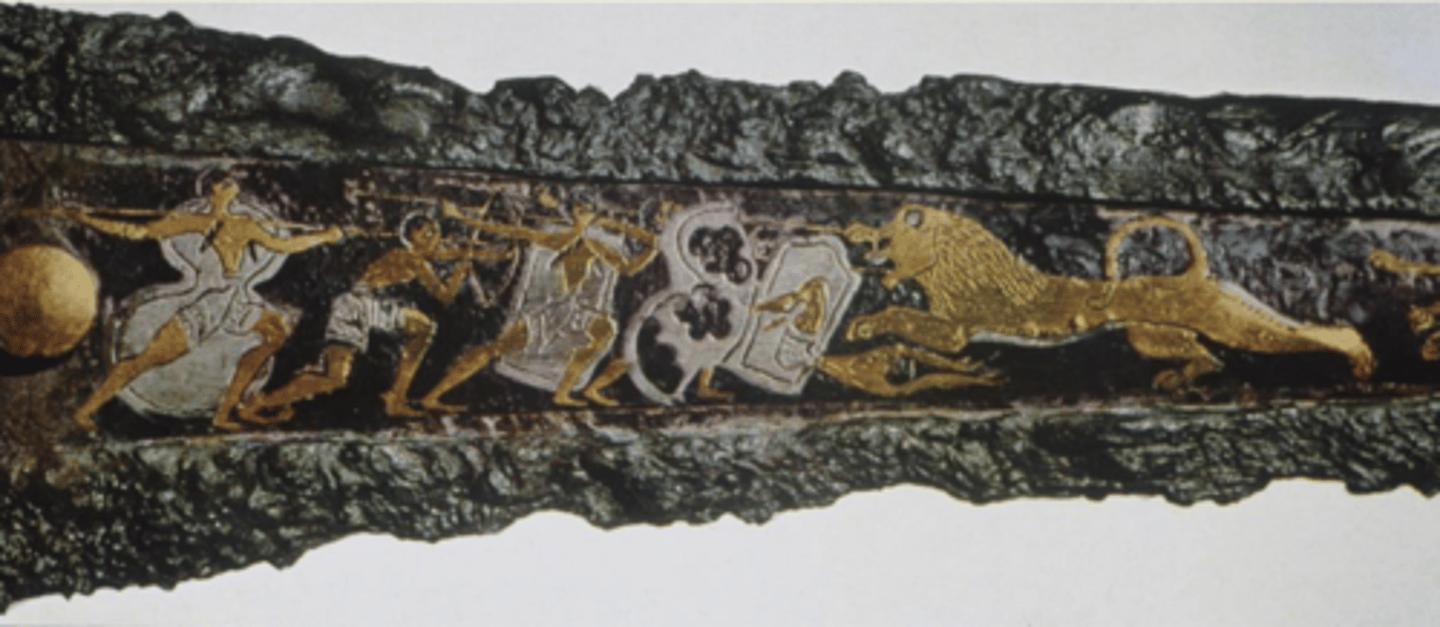
Hieroglyphic script
on seal-stones in crete
Linear A
on clay tablets in crete
still not deciphered
from Mycenae

Linear B
on clay tablets (found in the Mycenaean layer of the palace)
ideograms, numerals & syllabic signs
1952: decipherment by Michael Ventris
GREEK
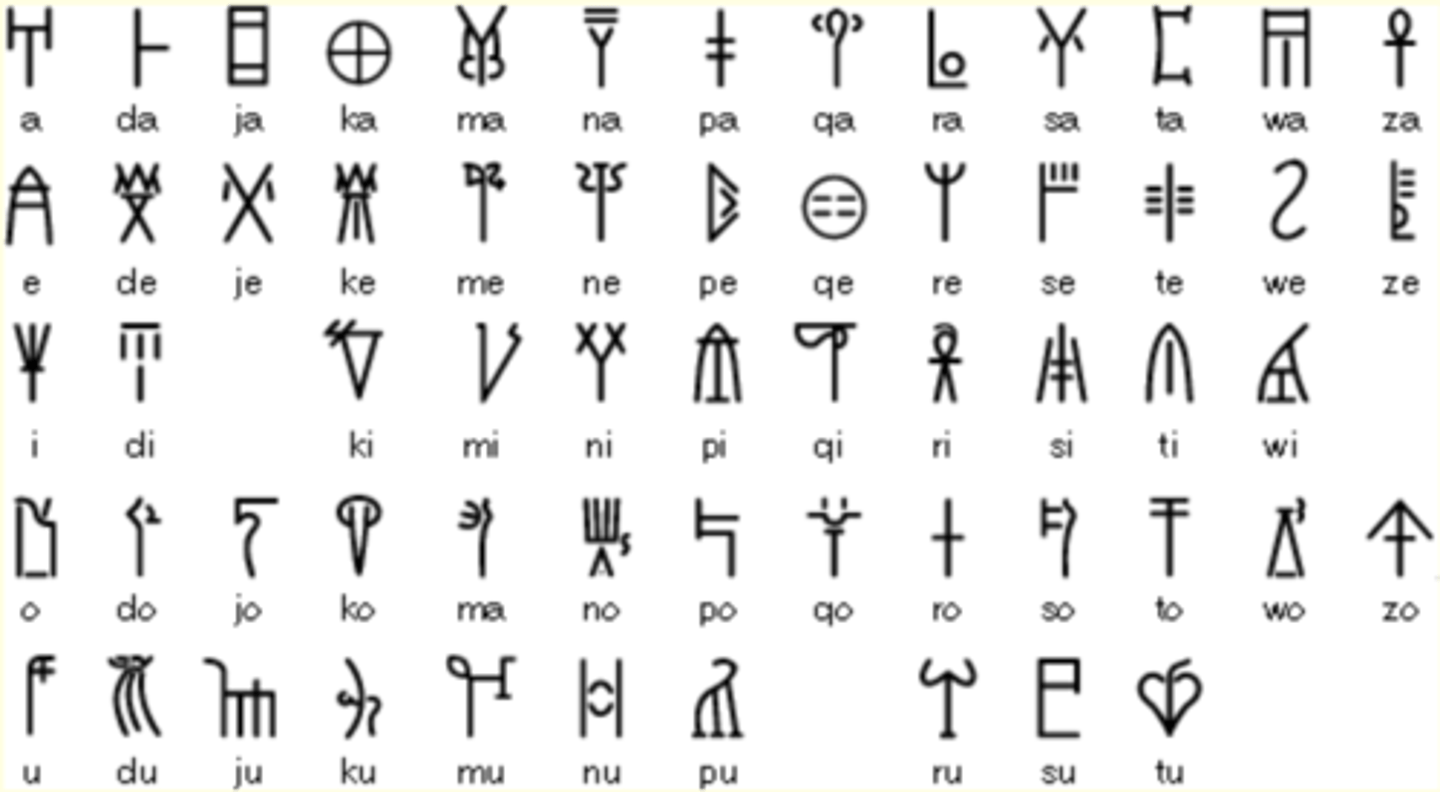
Palace Records
not private, but only bureaucratic use of writing
found on linear b tablets
Wanax
lord and commander-in-chief of the army
Lawagetas
commander of the army ('leader of the people')
Hequetas
military officer ('follower')
Qasireu
town official
Damos
people = farmers, workers & slaves
Pylos Great Room (Mycenaean)
Mycenaeans
Less open than minoans
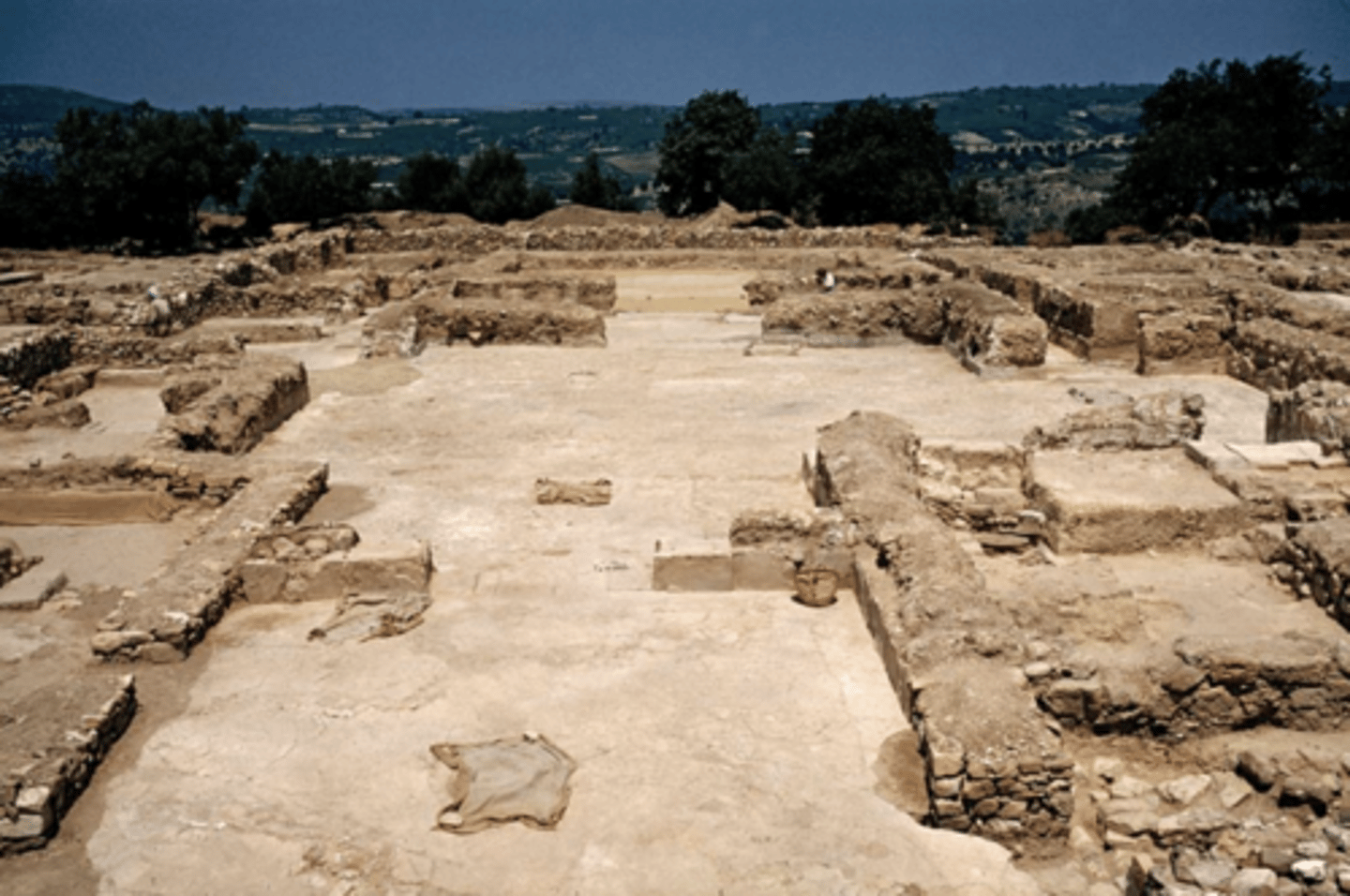
Linear B Tablet from Pylos (Mycenaean)
Mycenaeans
decipherable writing, greek

Dark Ages
No centralized political organization
No centralized economy
Self-sufficient communities with a local chief
Population decline
No writing
Iron!
Great hall at Lefkandi Euboea (Dark Ages)
Euboea
Much more functional, less grand
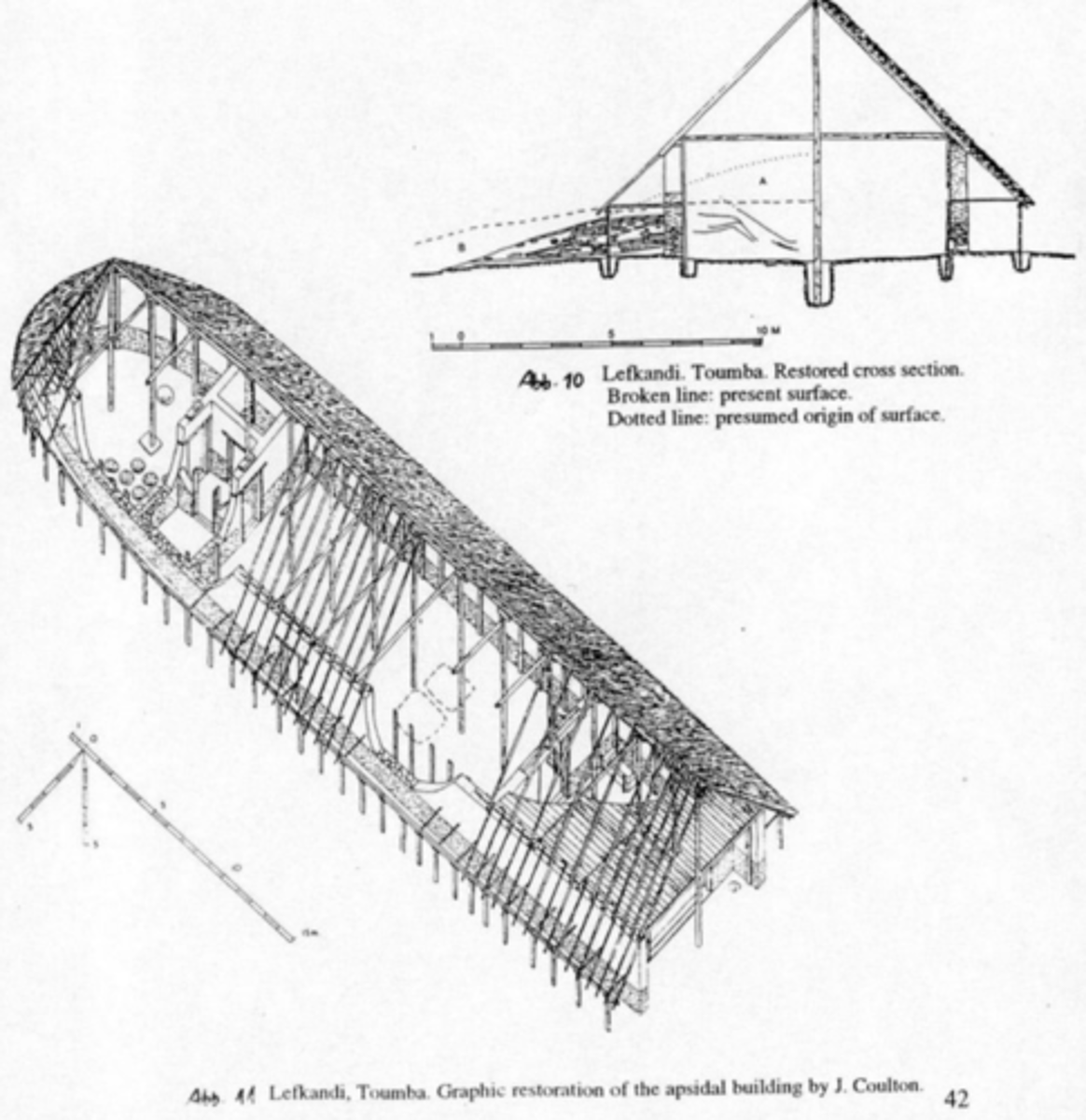
Protogeometric amphora (Early Dark Ages)
simple but still fairly intricate
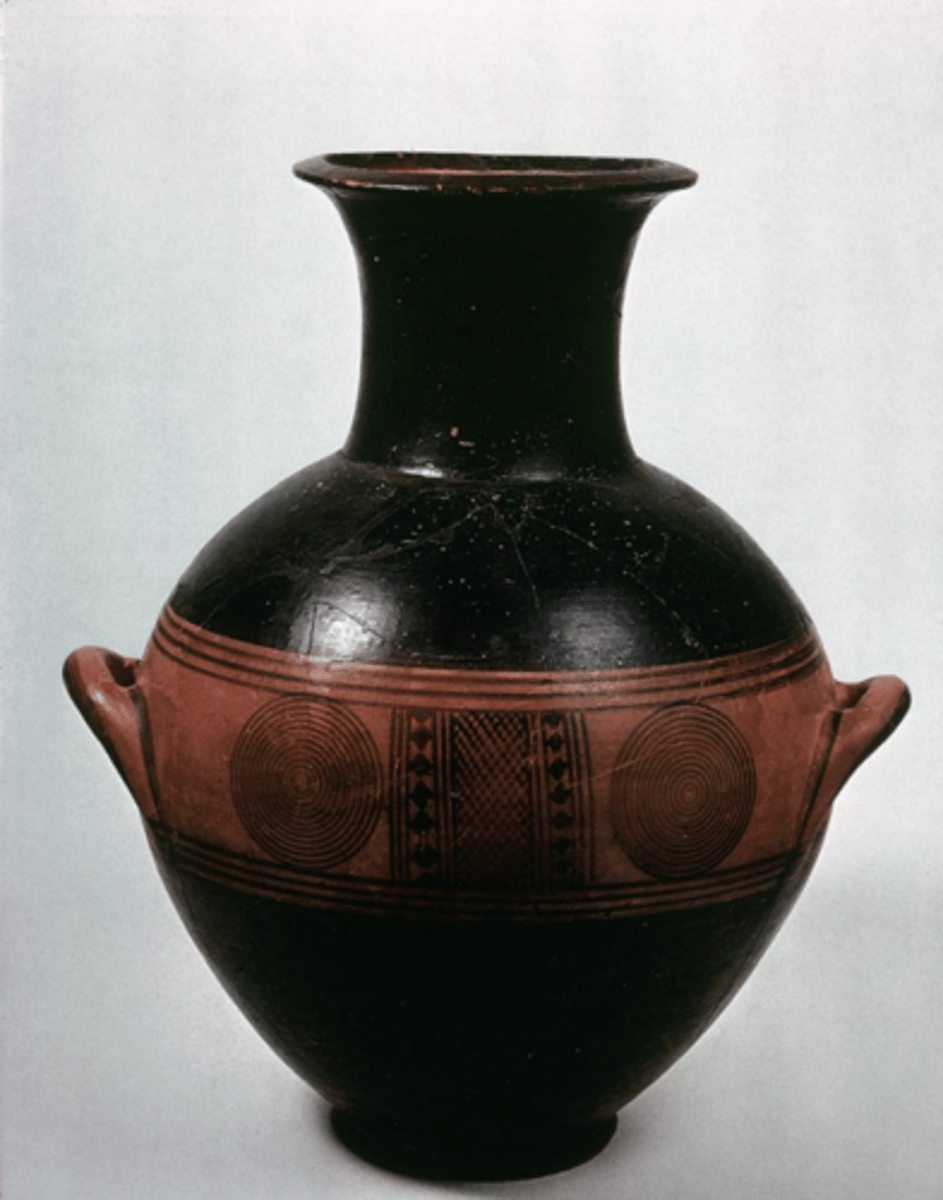
Geometric funerary vase with scenes of
ritual mourning and funeral procession (Late Dark Ages)
very very intricate
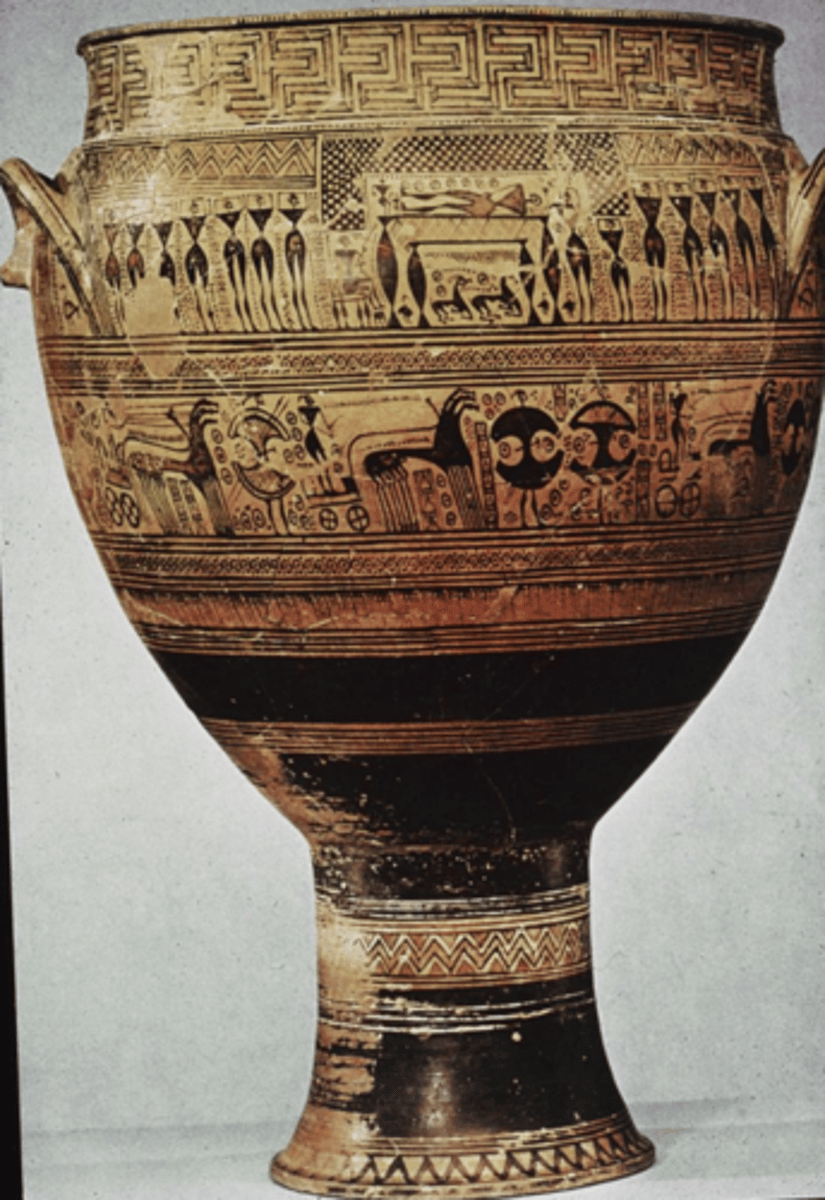
Greek Alphabet
800 BC - late dark ages
Not related to Linear B but to the Phoenician alphabet
22 Phoenician consonants for Greek consonants & vowels (+ 3 new signs)
It is a phonetic alphabet
Languages vs Writing Systems
Greek is a language
Linear B and the Greek Alphabet are writing systems
Different writing systems can be used to write the same language
Dipylon Vase (Renaissance): 'whoever of the dancers dances most delicately, to him this [prize will be given?]'
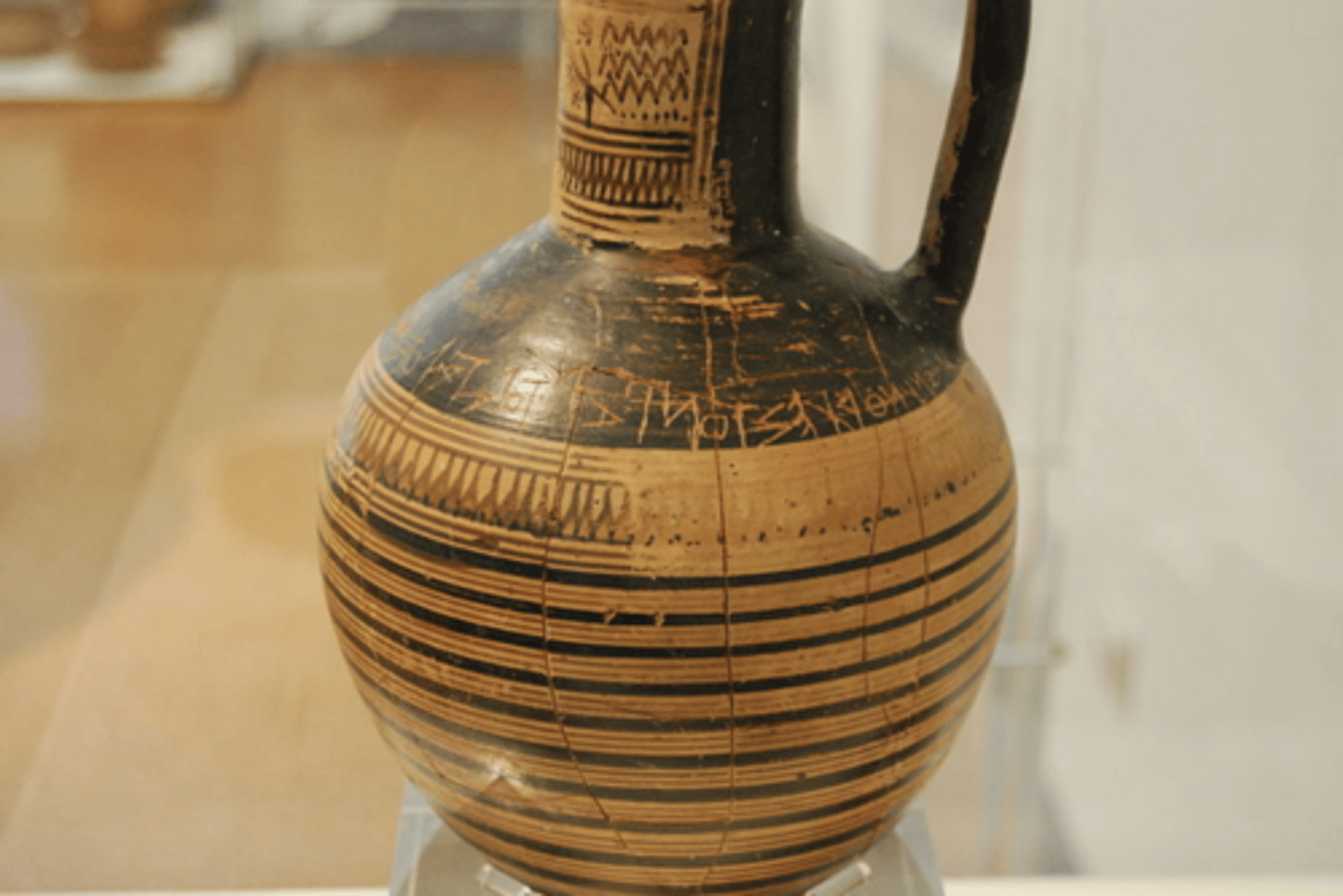
'Cup of Nestor' from Pithecusae (Renaissance): 'I am the cup of Nestor, a joy to drink from. Whoever drinks this cup, straightway the desire of beautiful crowned Aphrodite will seize him.'
Found in Italy
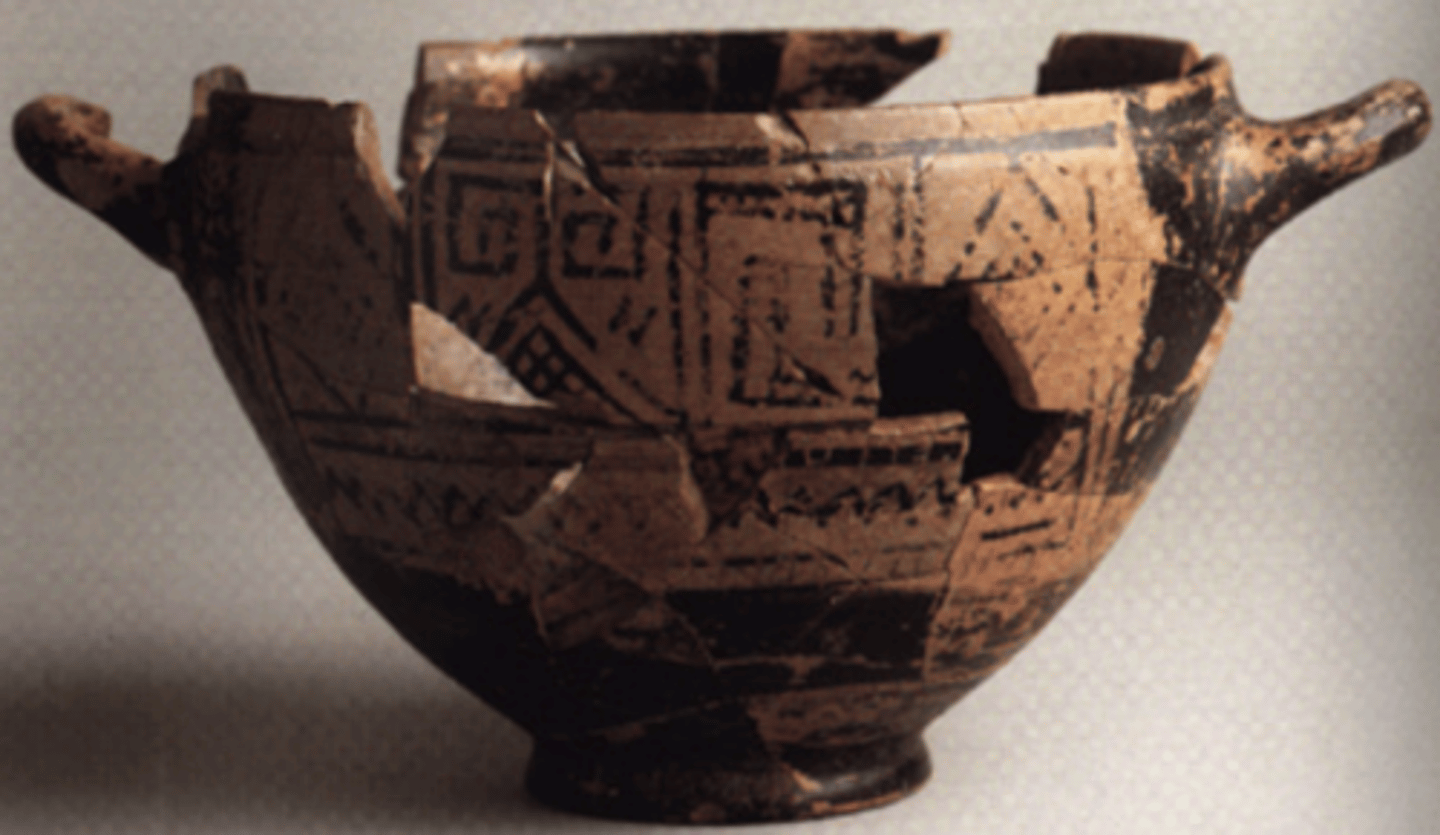
'oral' literature
enjoyed through performance and NOT through readings
Oral theory
Milman Parry & Albert Lord
based on slavic oral poetry
no fixed text
used formulas (repetitive)
FORMULAS
ready-made building blocks for oral re-composition in performance
Fresco from Pylos with a bard playing the lyre (Mycenaean)
Oral poetry
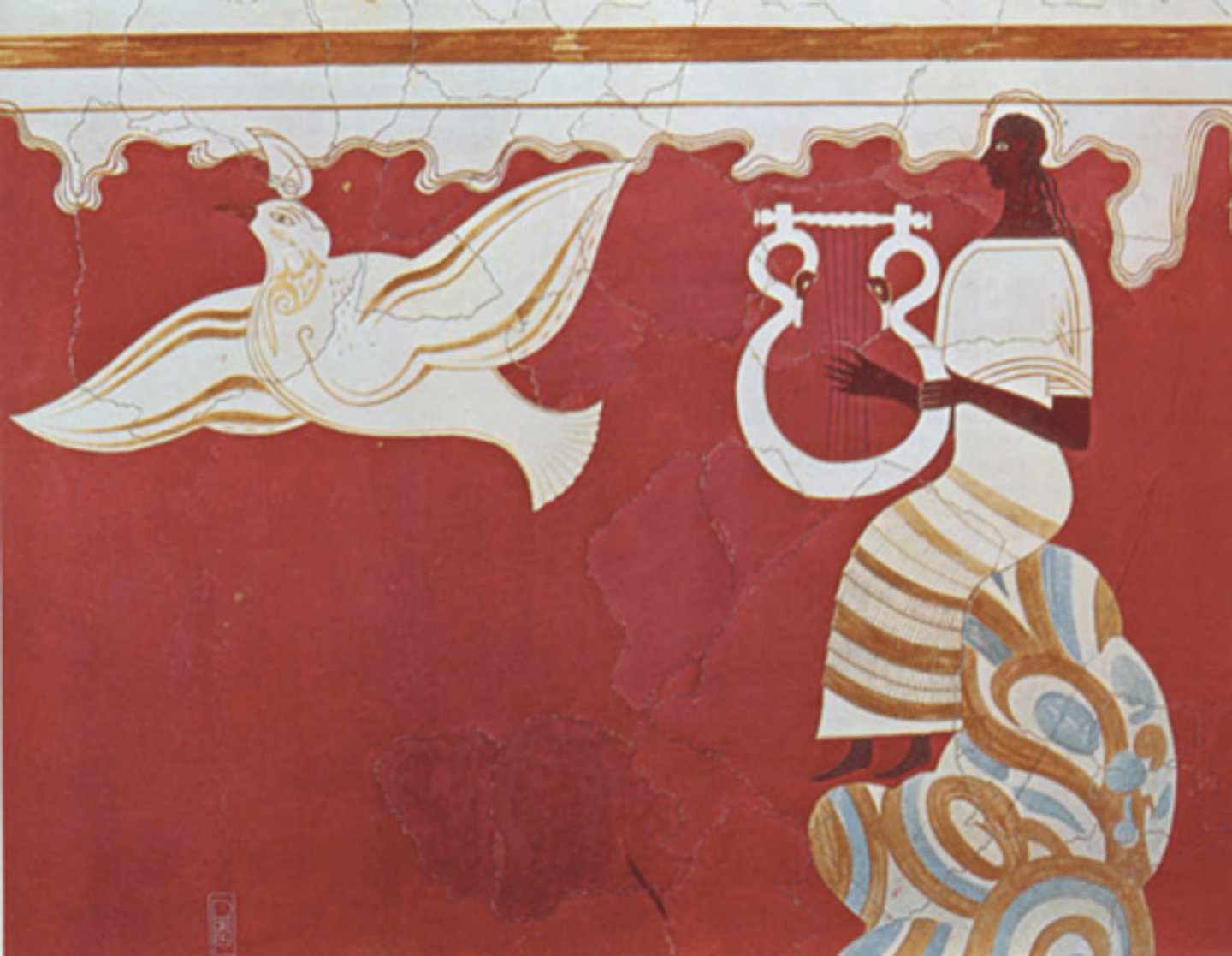
Theories for how Homer was written down
1. The poems were written down at the time of composition
by the poet himself
2. They were dictated to a scribe when they were being composed orally
3. They were written many centuries after having circulated in Greek in a purely oral form
Exekias, Achilles and Ajax playing
(550-520 BC - archaic period)
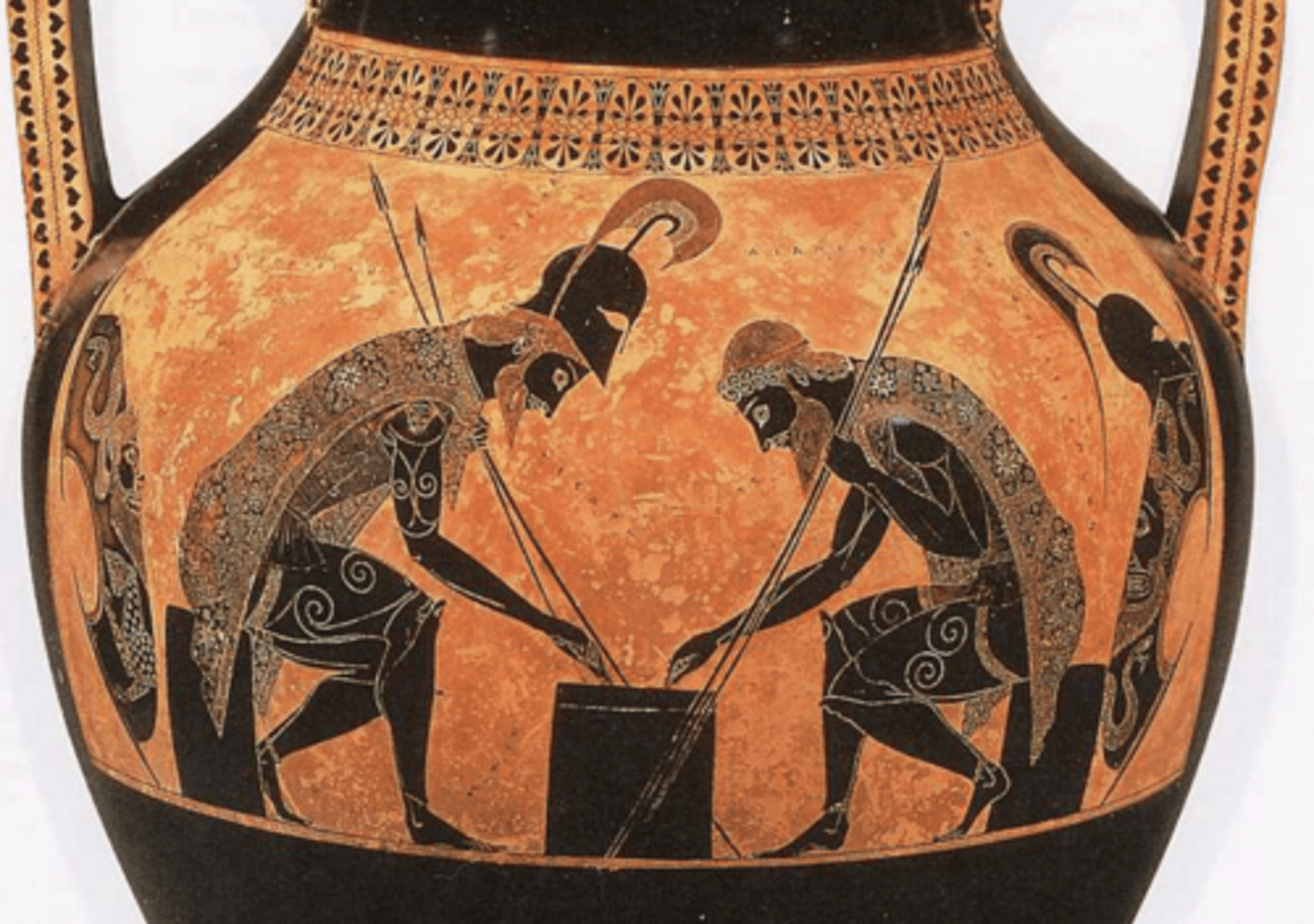
The Trojan Horse (amphora, c. 670
BC - archaic period)
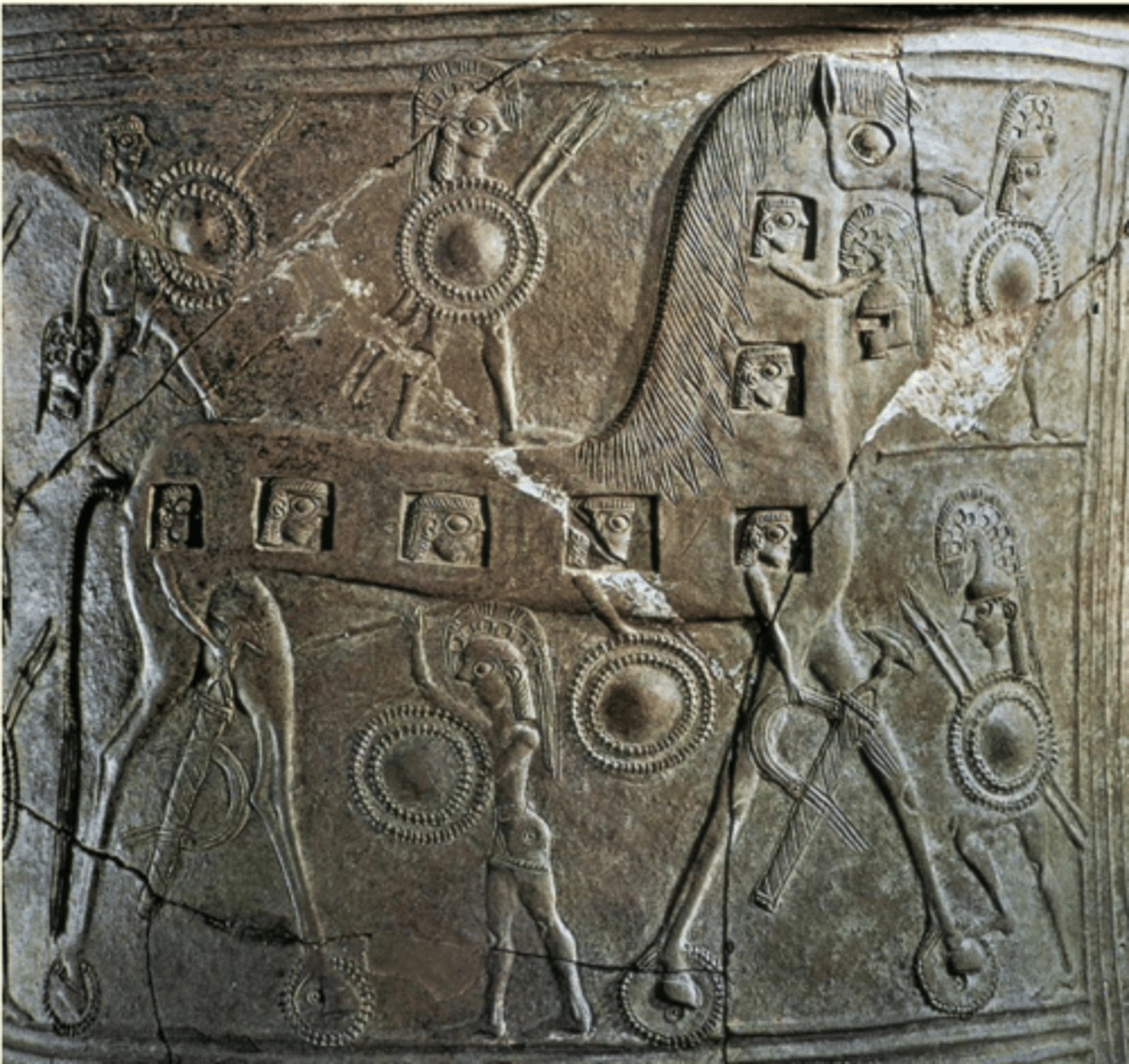
The 'Mask of Agamemnon'
(1550-1500 BC - Mycenaean period)
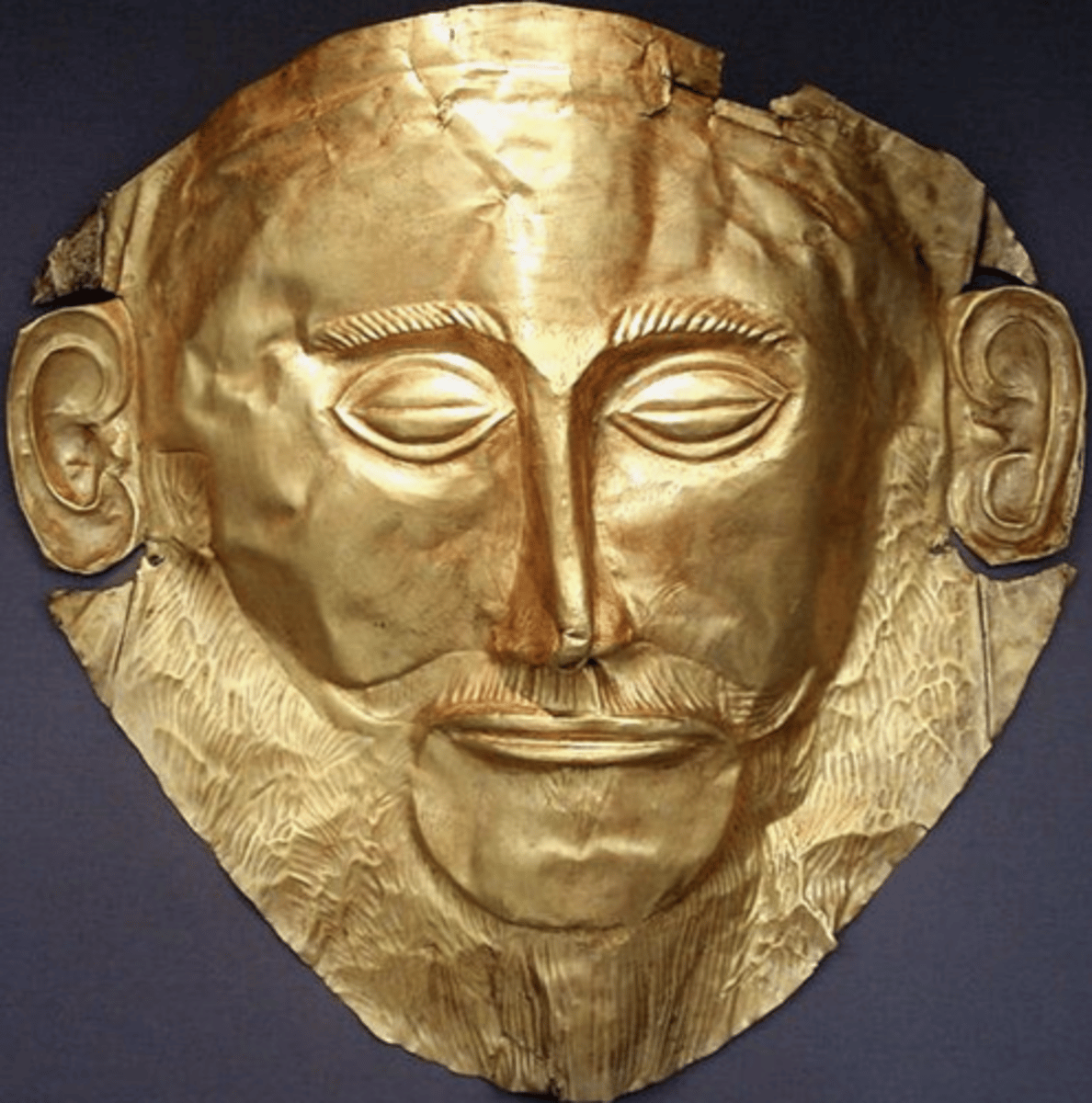
Hattusas, Lion Gate (c. 1400-1200 BC)
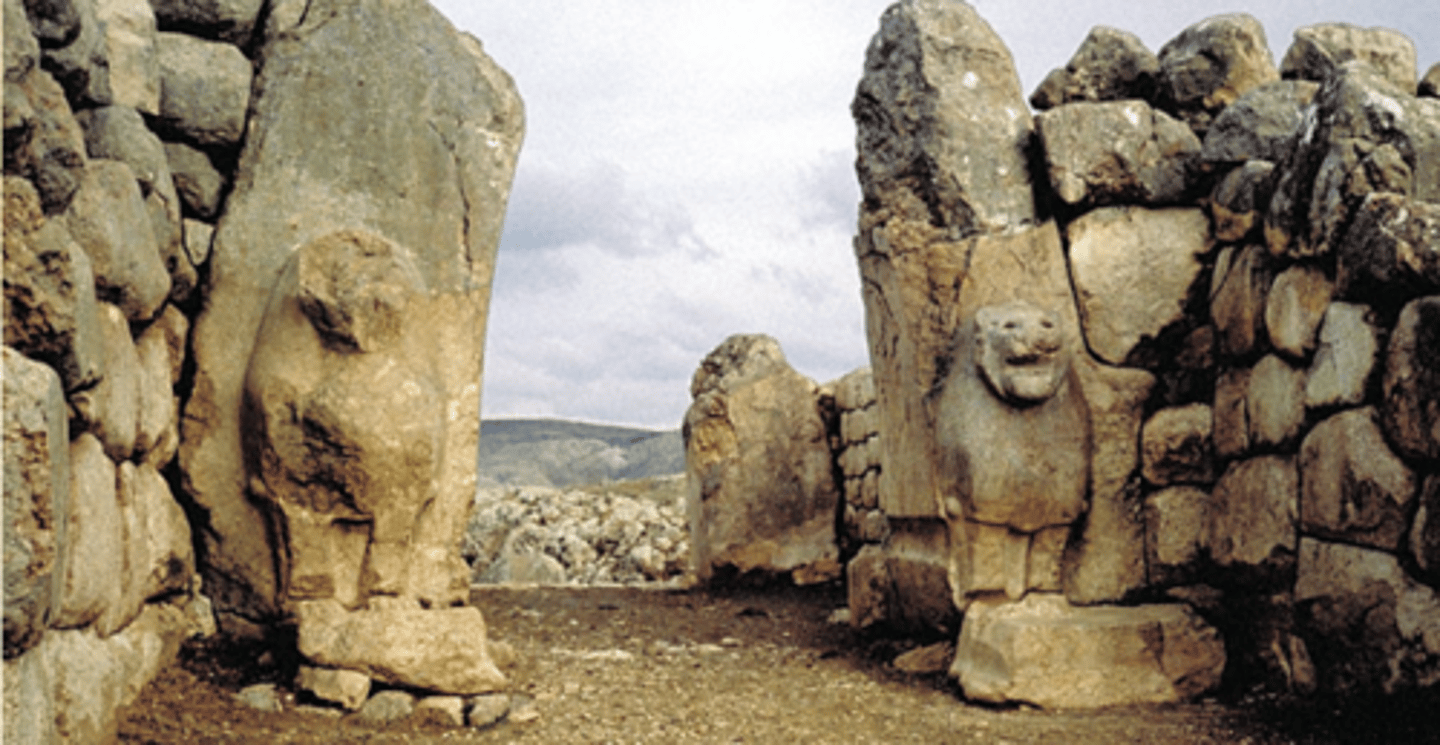
Man-covering shields
Mycenaean period
look like figure 8
Round Shields
Late mycenaean and early dark ages
small and round, lightweight
Boar's tusk helmet from Crete
(1450-1300 BC - Mycenaean period)
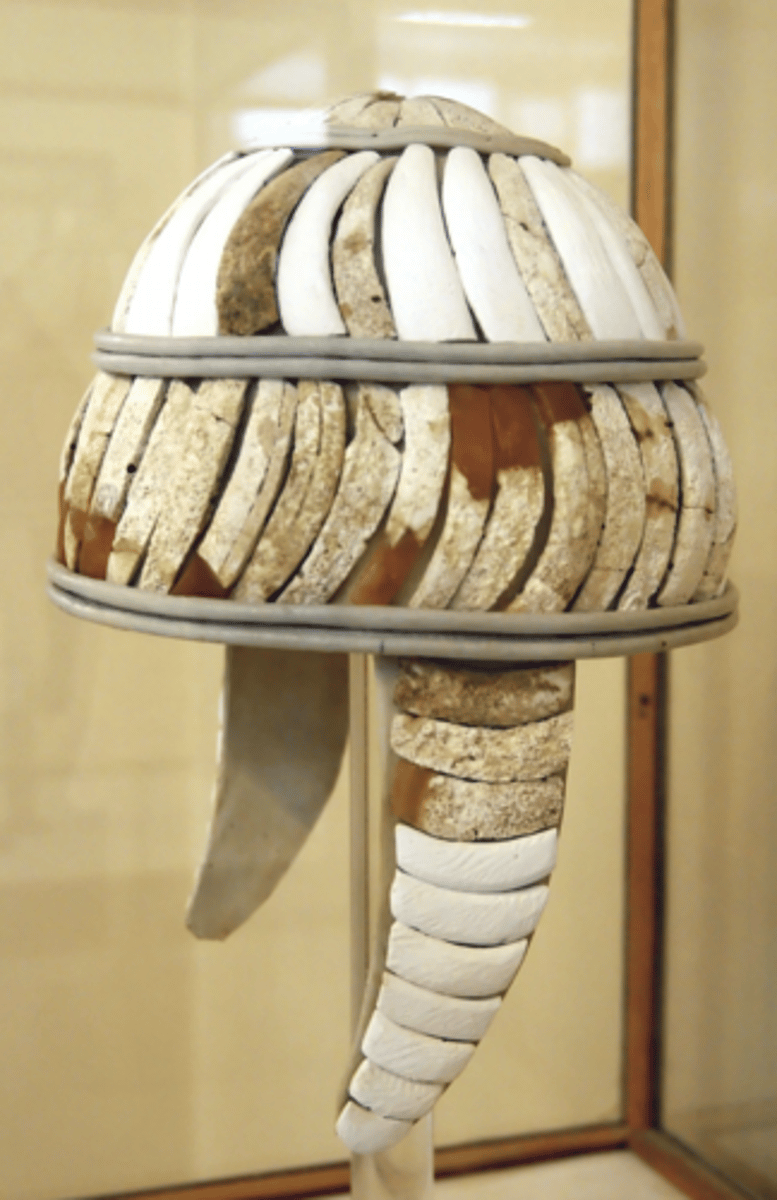
Bronze Armor with Helmet of Boar's
Tusk from tomb at Dendra, near
Mycenae (c. 1450 BC - Mycenaean
period)
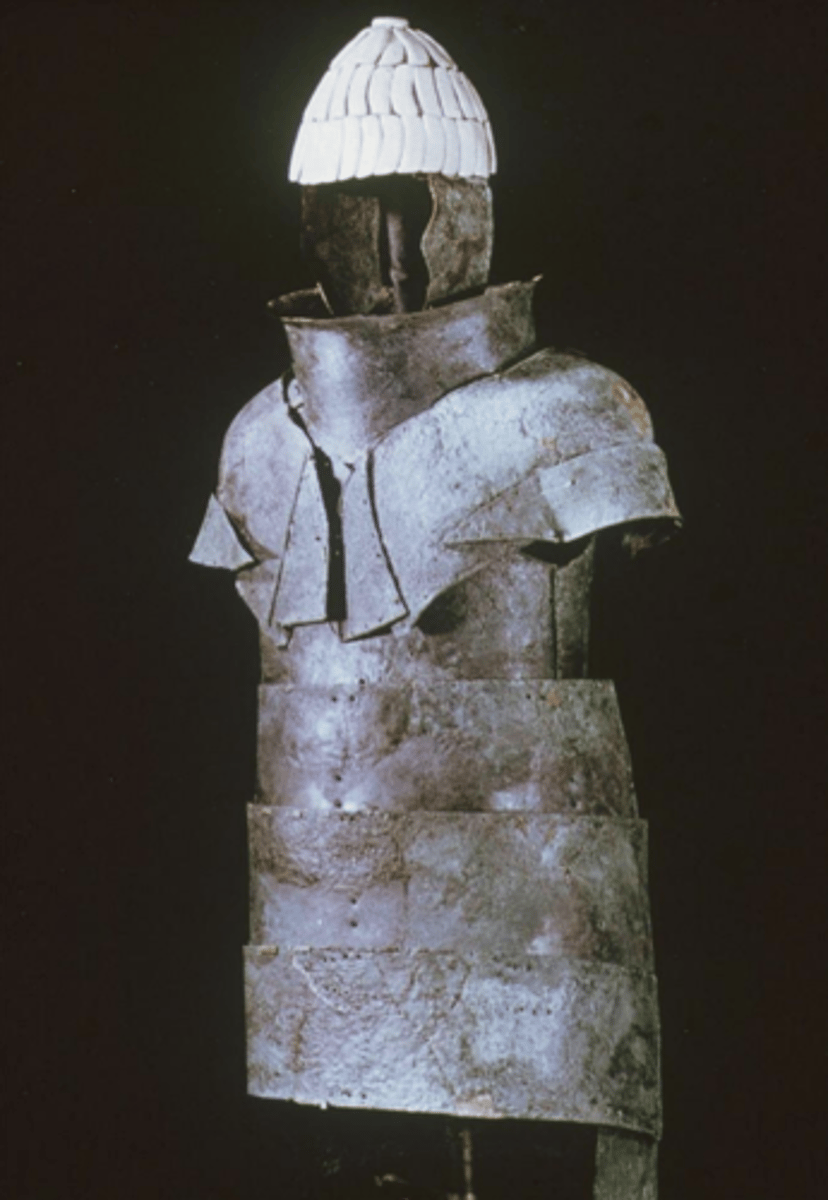
Head of a Warrior with Boar's Tusk
Helmet from Mycenae (c. 1250 BC -
Mycenaean period)
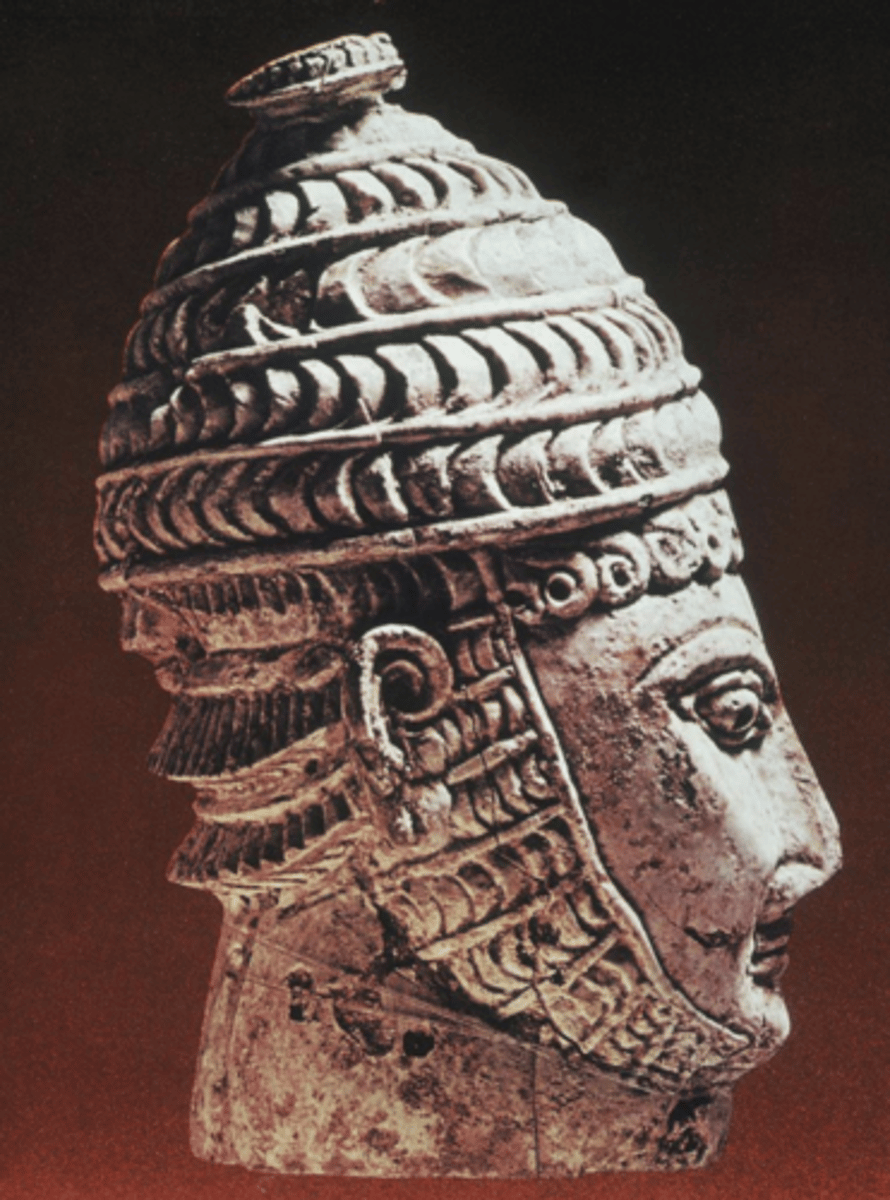
The "Tarzan" fresco, from Pylos, Mycenaean Period
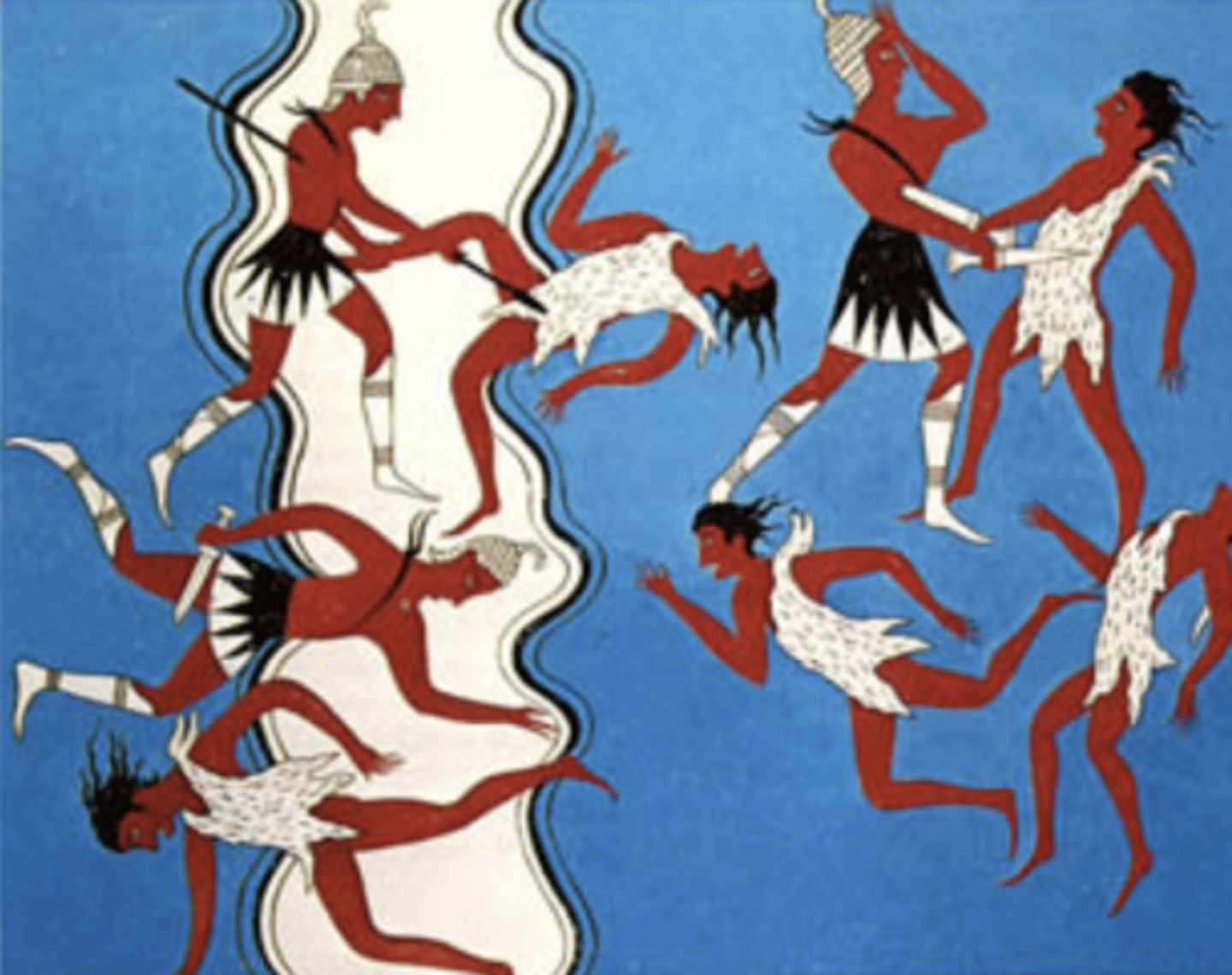
Boar Hunt fresco, from Tiryns, Mycenaean period
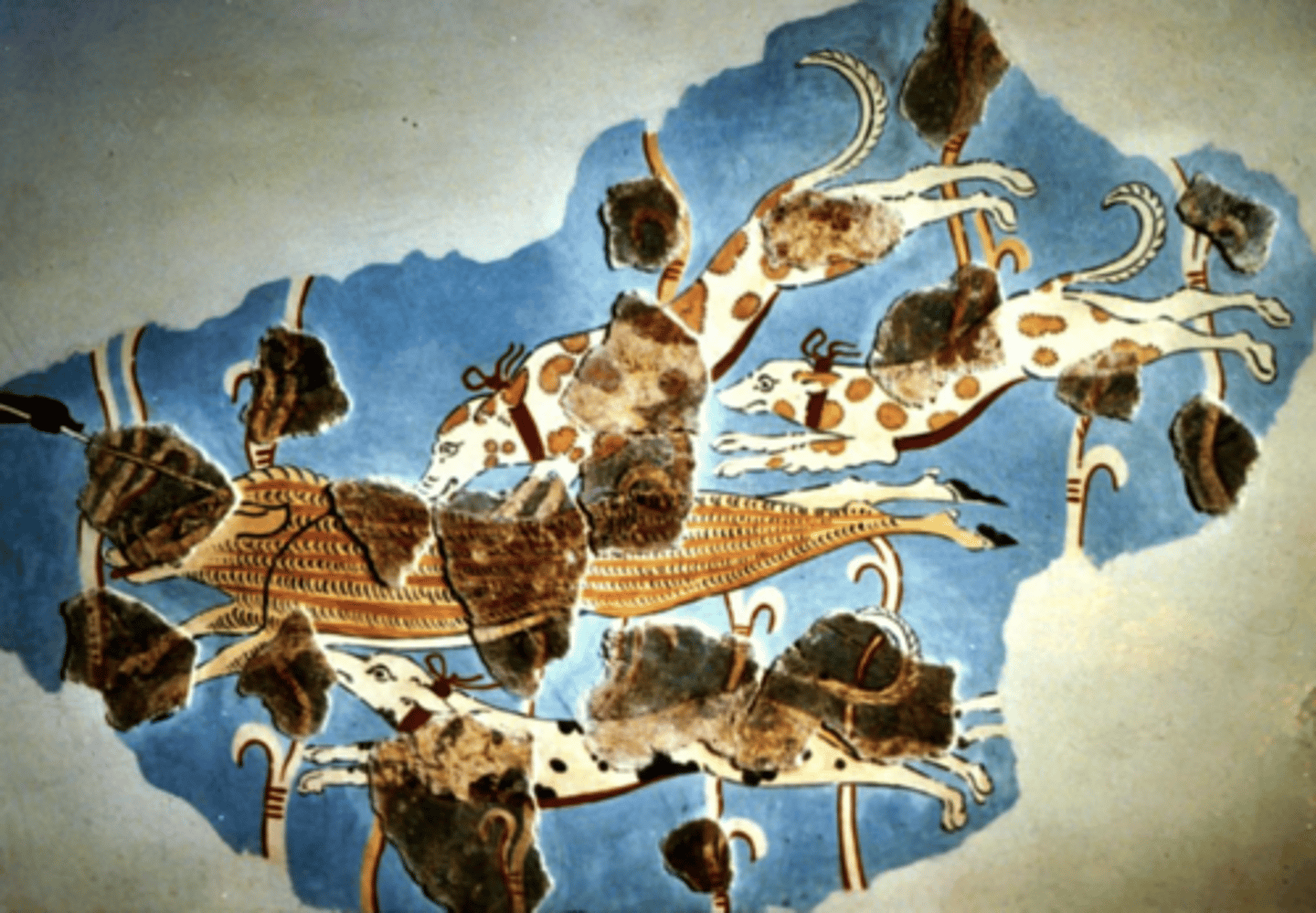
Chariot scene, Grave stele from
Mycenae, c. 1600 BC
Early Mycenaean period
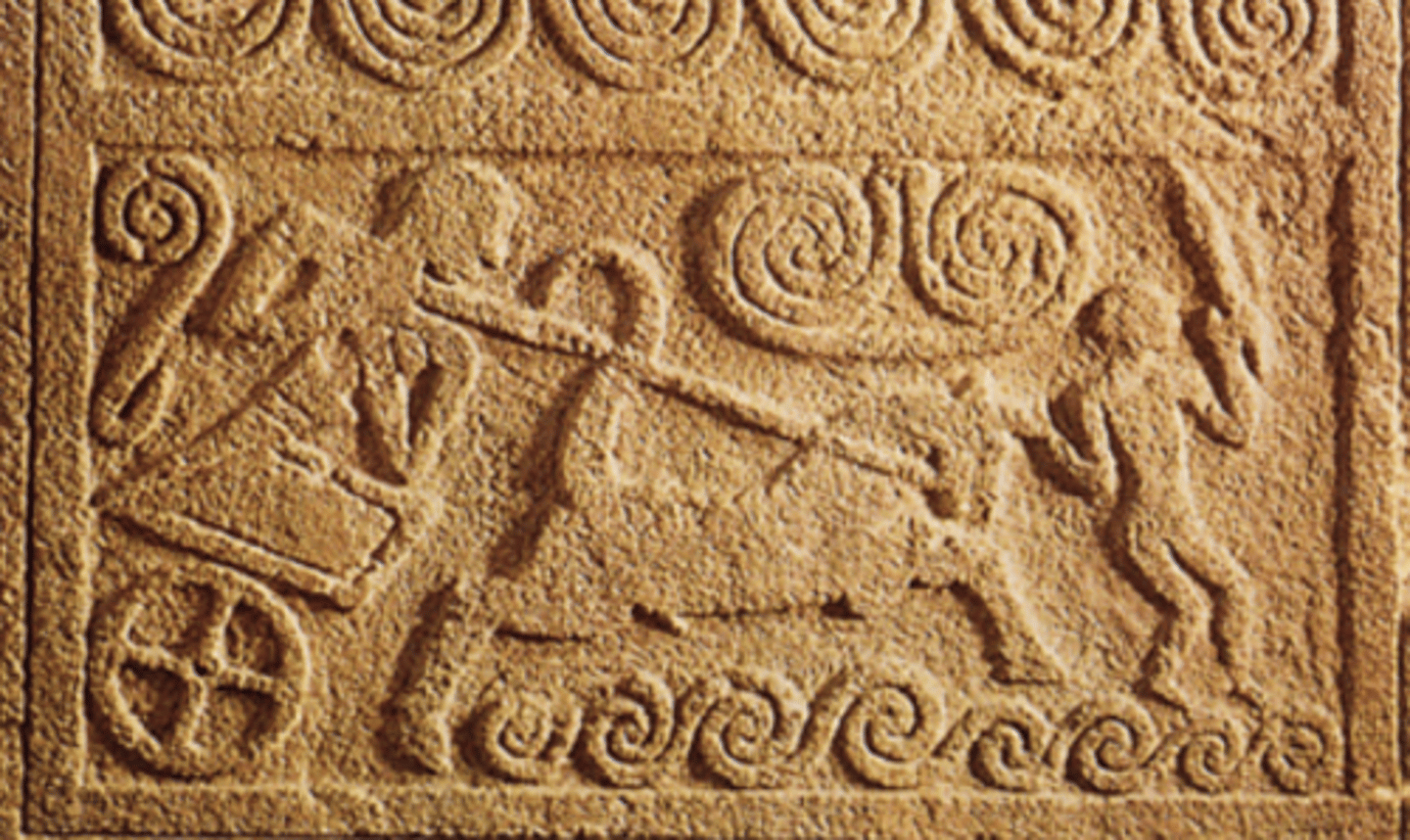
Chariot scene, from Tiryns,
c. 1350 BC, Mycenaean period
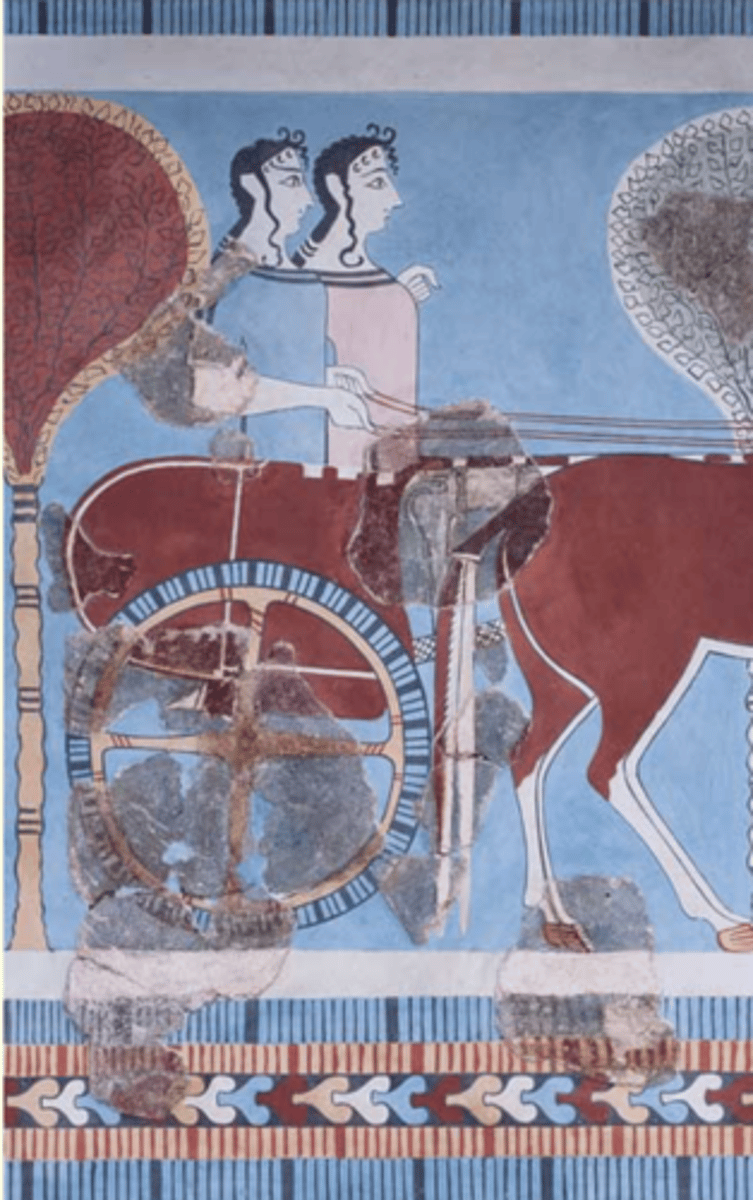
Chariot scene, from Pylos,
c. 1350 BC, Mycenaean period
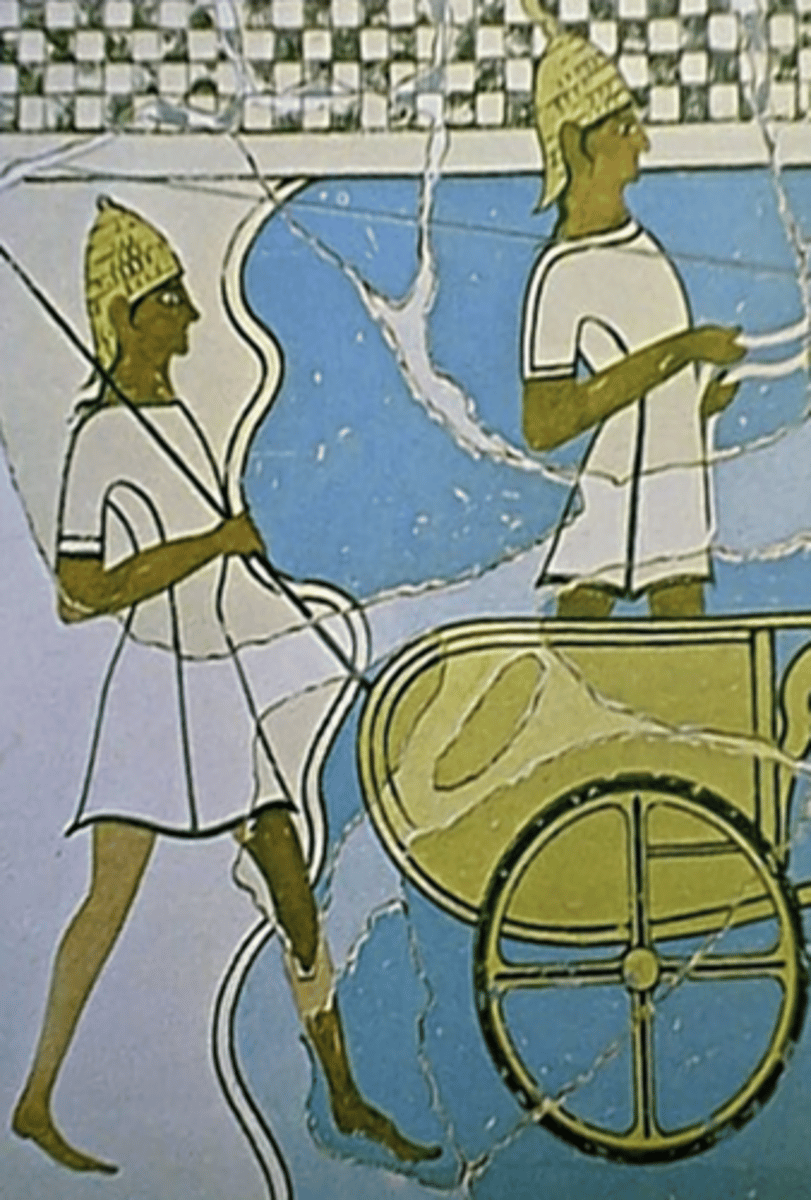
Blinding of Polyphemus
(Amphora, c. 650 BC -
archaic period)
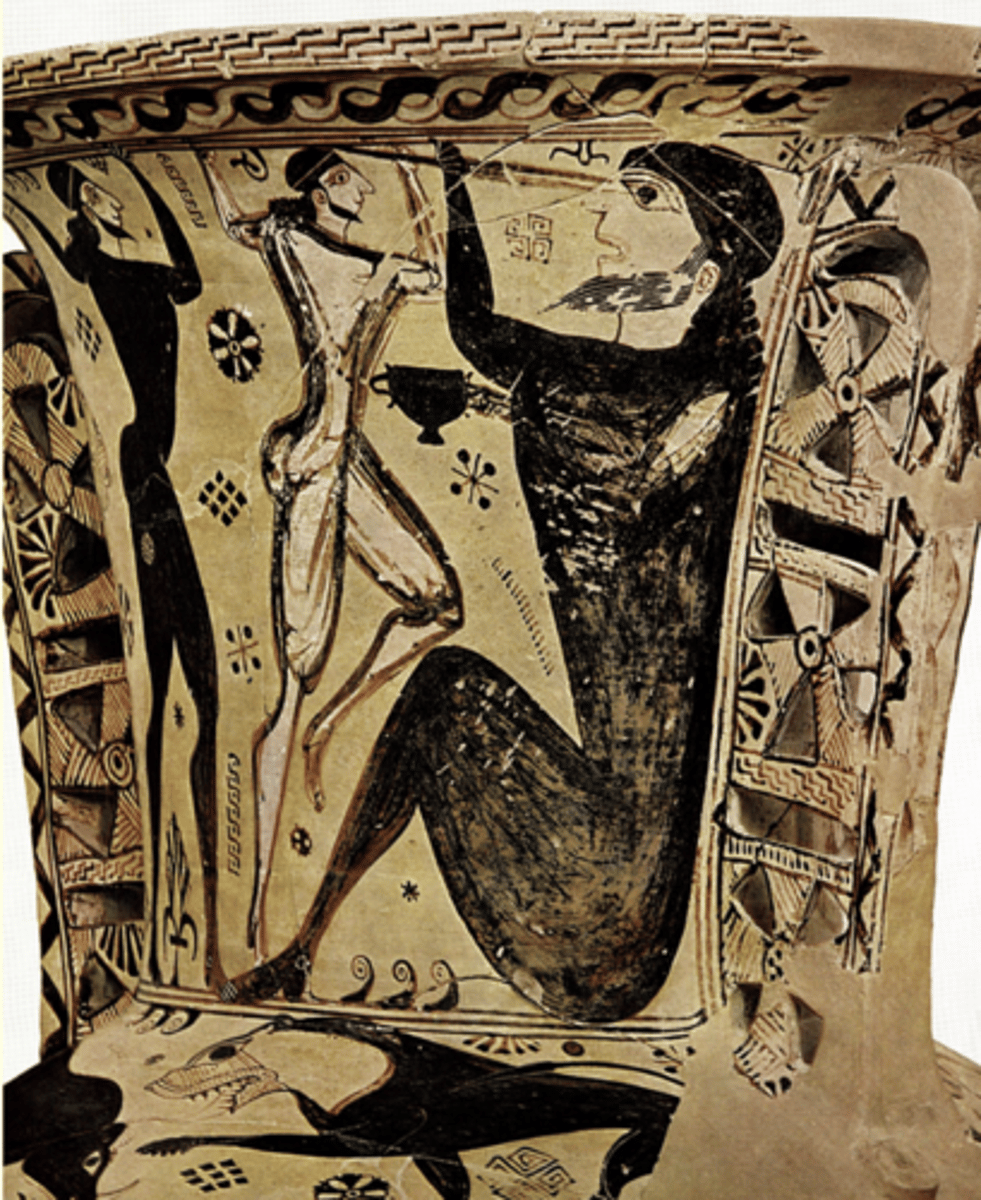
mēnis
wrath/rage
Tiepolo, Athena intervenes in the quarrel between Achilles and Agamemnon (1757)
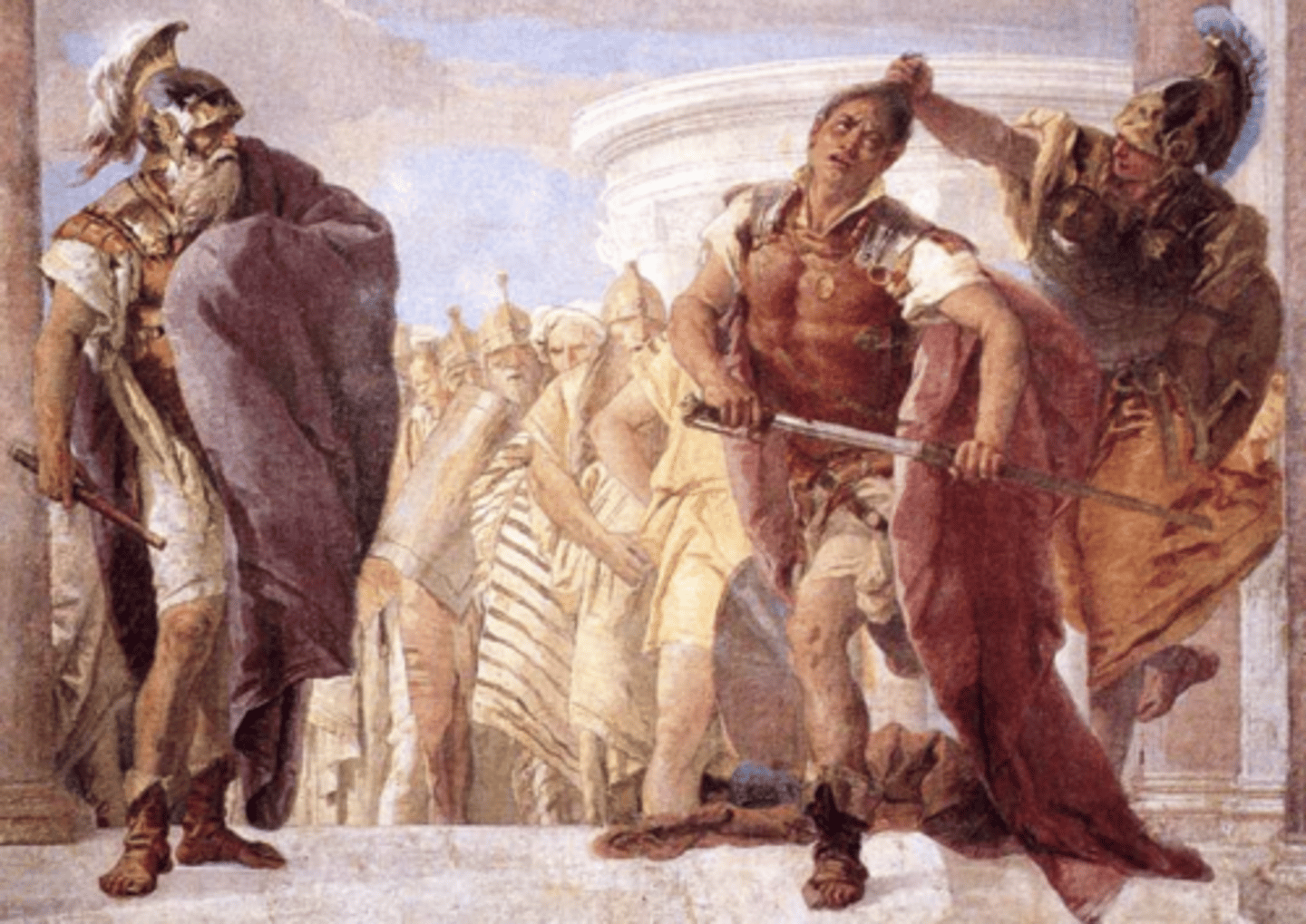
Priam begging Achilles for the body of
Hector (Athenian red-figure vase (c. 490 -
archaic period)
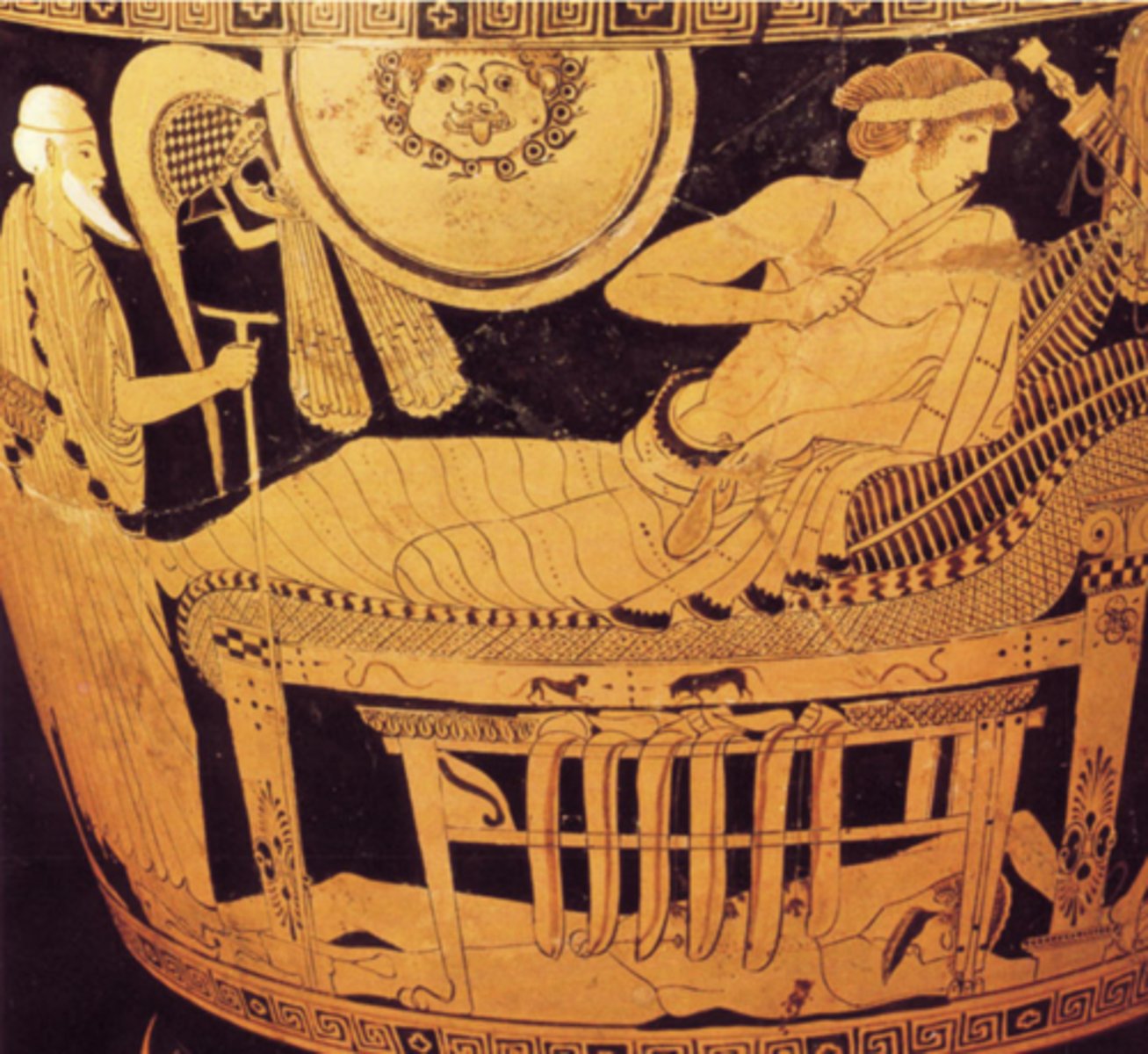
Ingres, The Embassy to Achilles (1801)
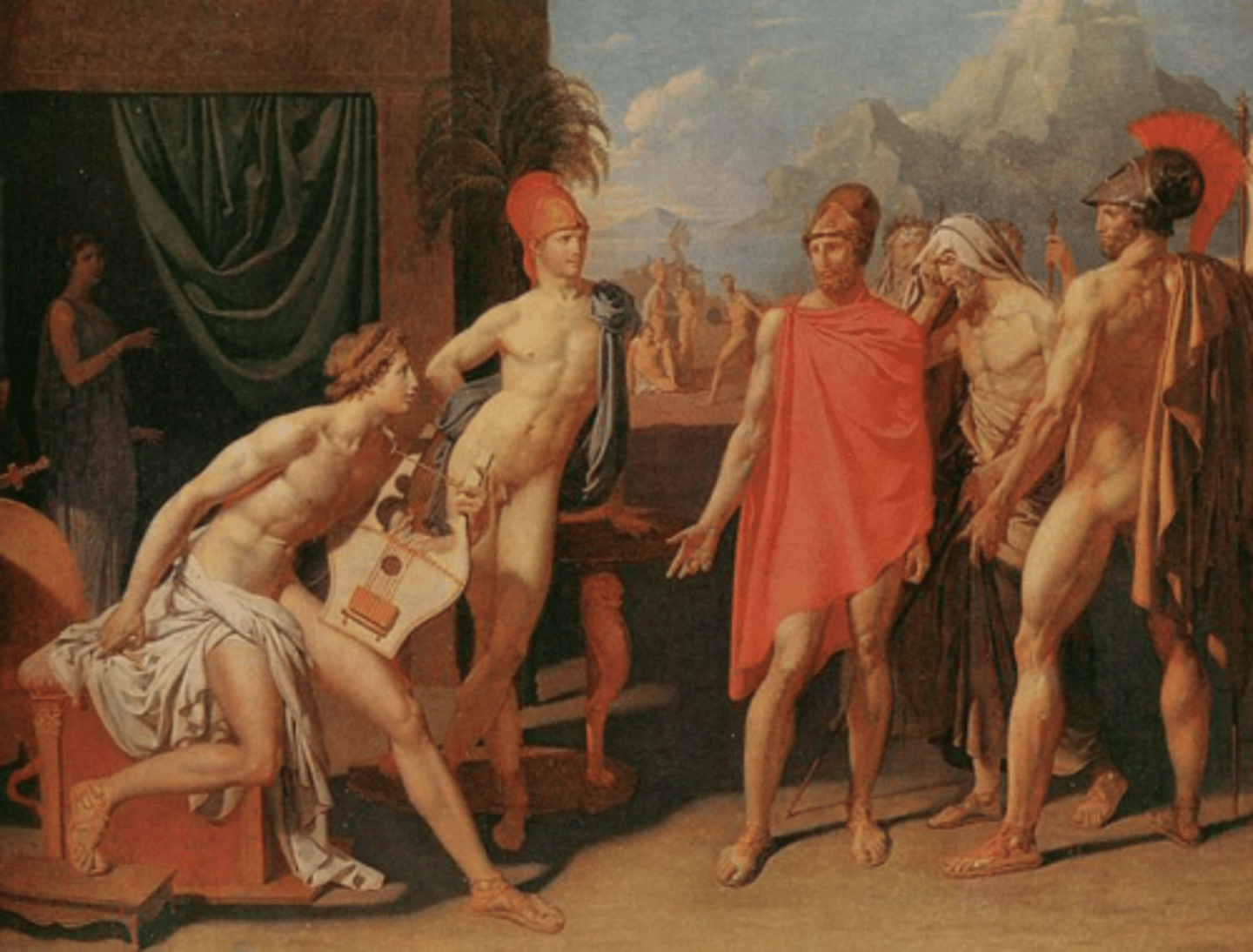
Achilles' surrender of Briseis (fresco from Pompeii, 1st cent. AD - Roman period)

timē
honor
Kleos
glory
Geras
prize
Aidōs
shame
Shame Culture
One seeks to avoid shame (aidōs)
for himself
Highest good is the enjoyment of public esteem → honor (timē)
Result culture
One seeks success through glory (kleos) and prize (geras) → the individual is everything
Competitive values
Guilt Culture
One seeks to avoid sense of guilt
Highest good is the enjoyment of a quiet conscience → moral standards
Intention culture
Notion of the greater good → community is more important than individual
Cooperative values
Exekias, Ajax with body of Achilles
(ca. 540 BC - archaic period)
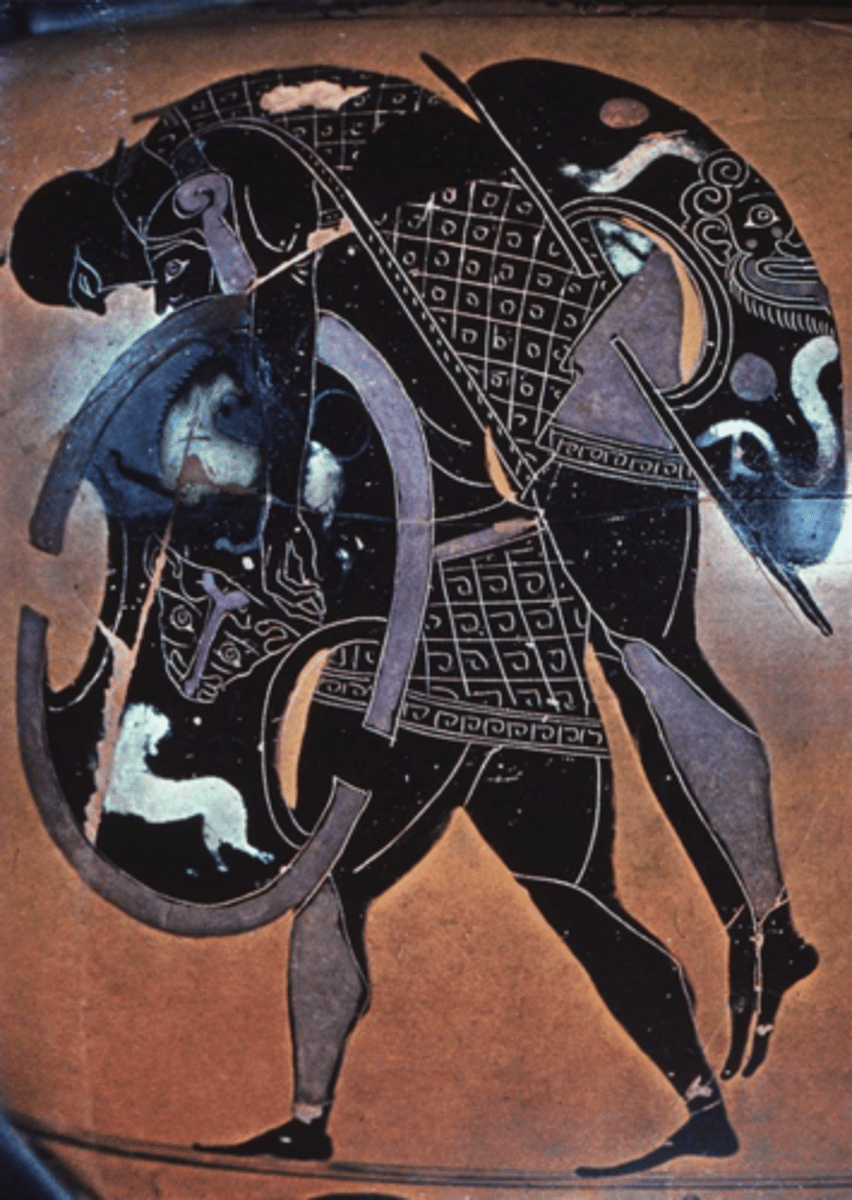
Achilles (red-figure amphora, c.
445-440 BC - classical period)
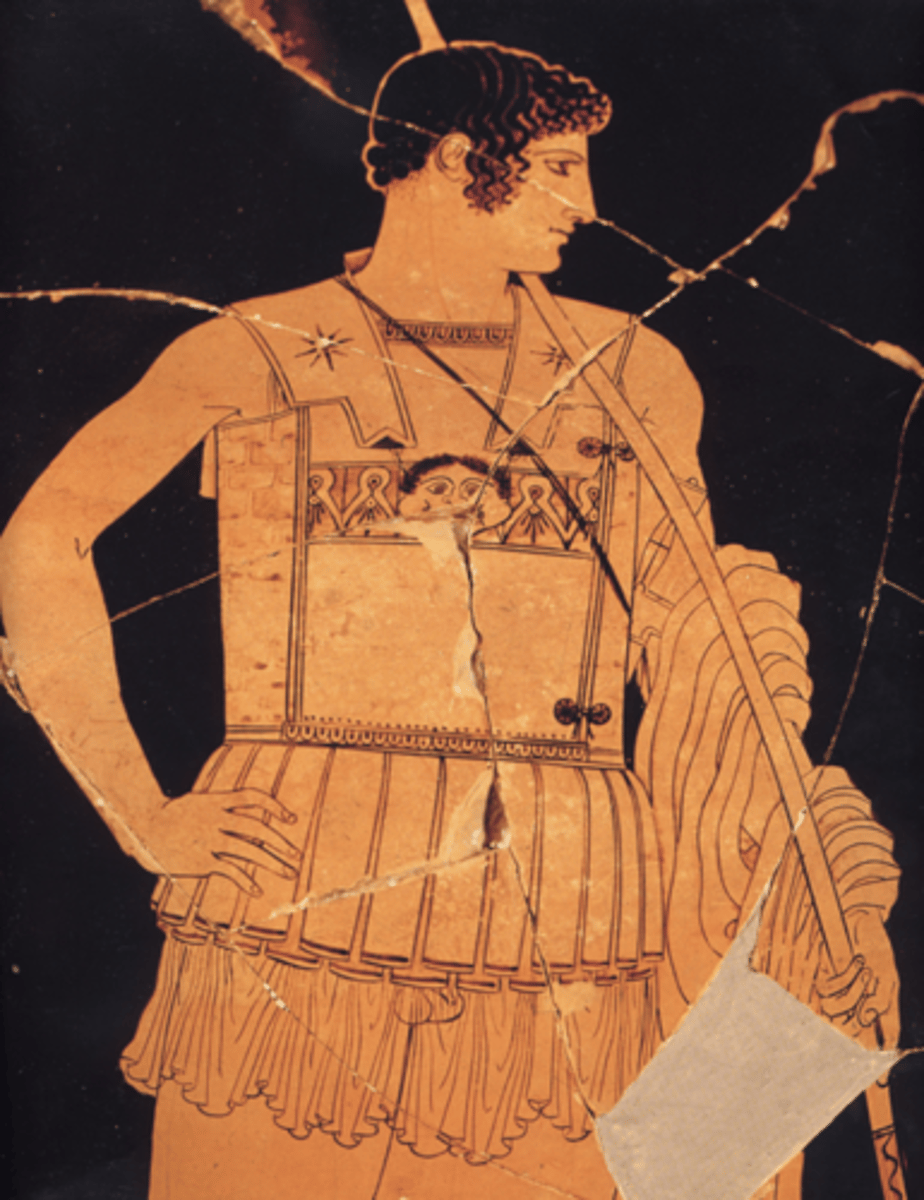
Achilles bandaging Patroclus (tondo of an Attic
red-figure cup, c. 500 BC - archaic period)
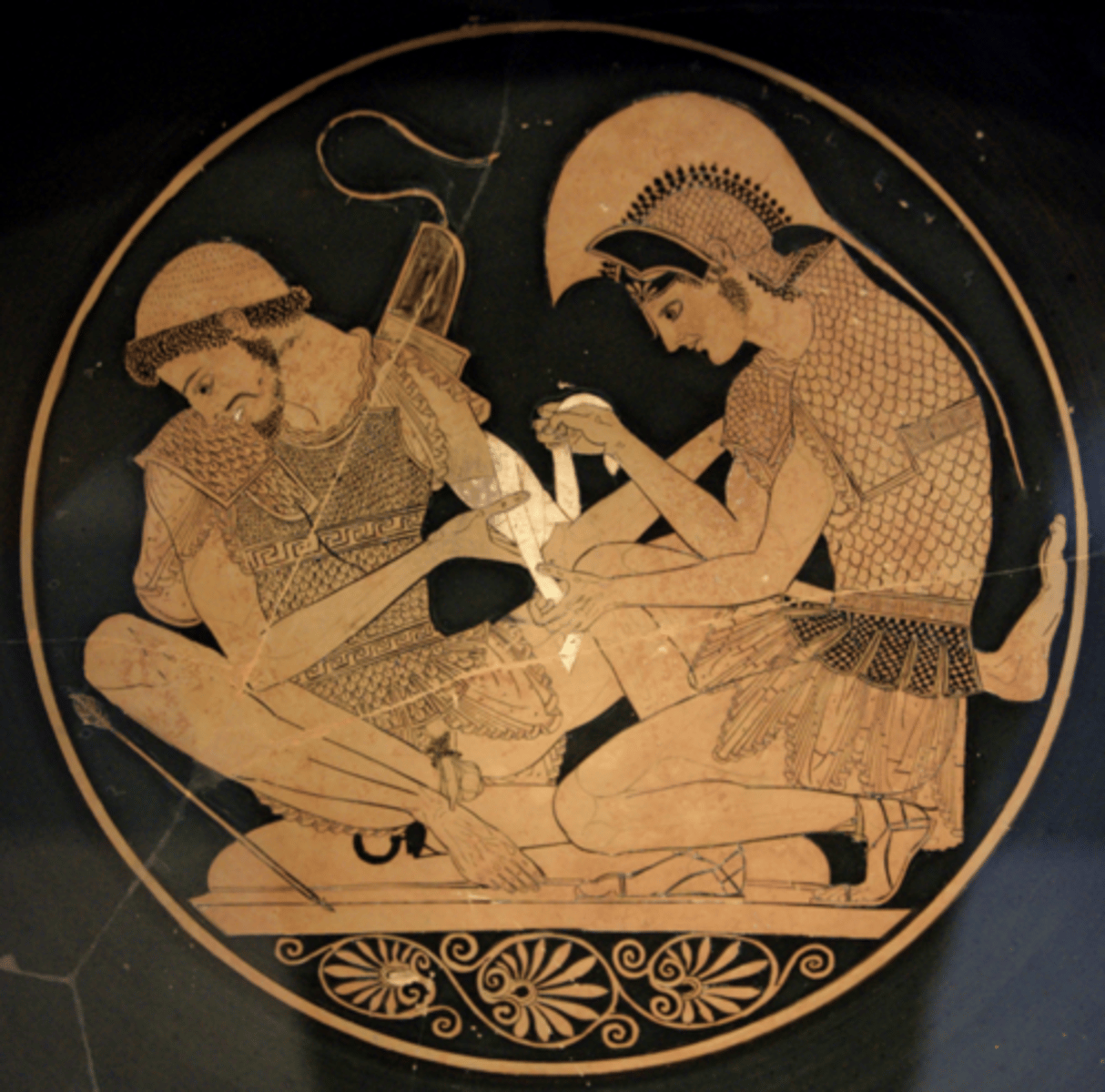
Euphronios, Hermes
directing Sleep and Death
as they bear Sarpedon
(krater, ca. 515 BC -
archaic period)
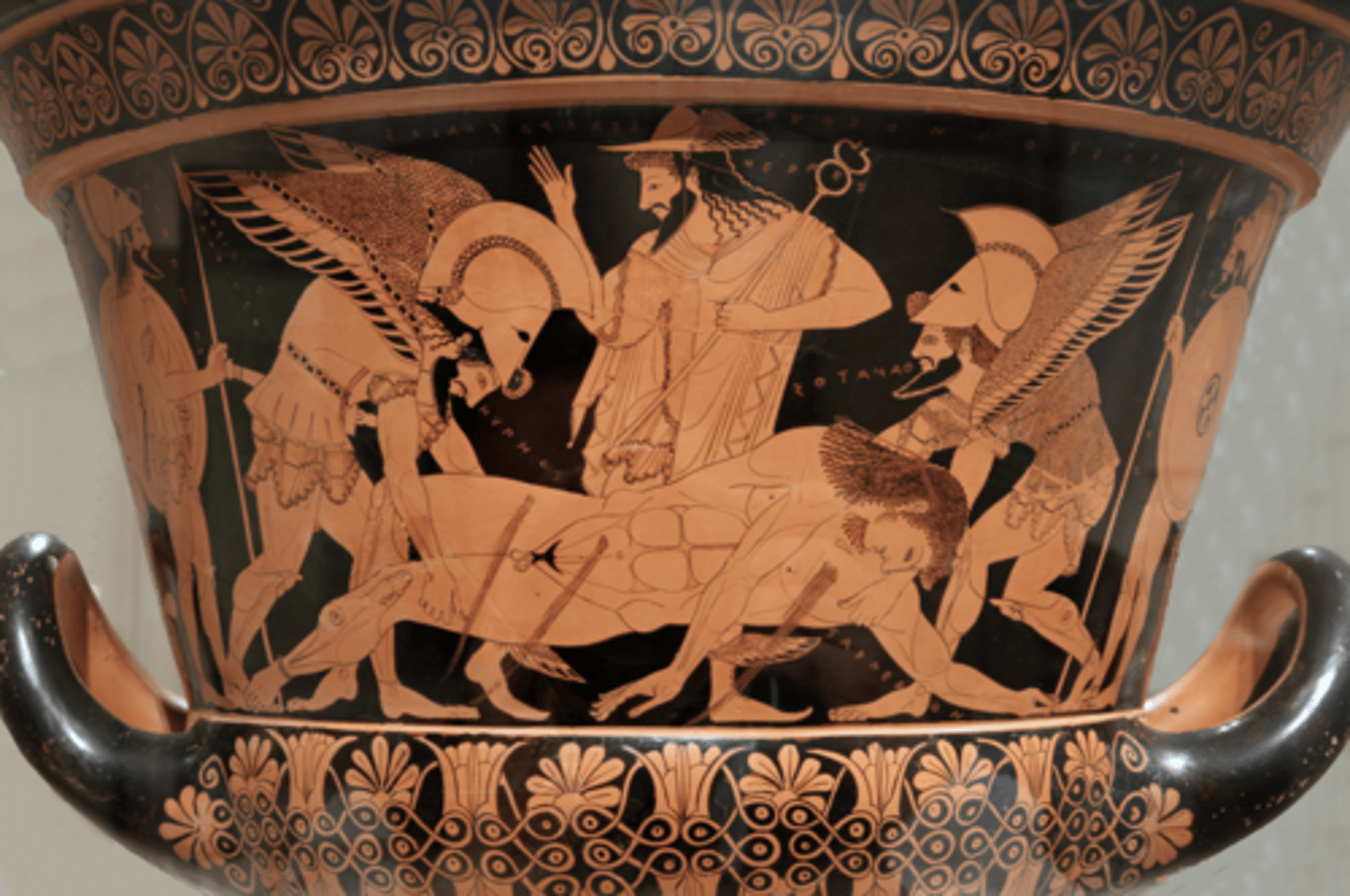
Achilles (2) fighting Hector (3) with Athena (1) and Apollo (4)
(Athenian krater c. 500-480 BC - archaic period)
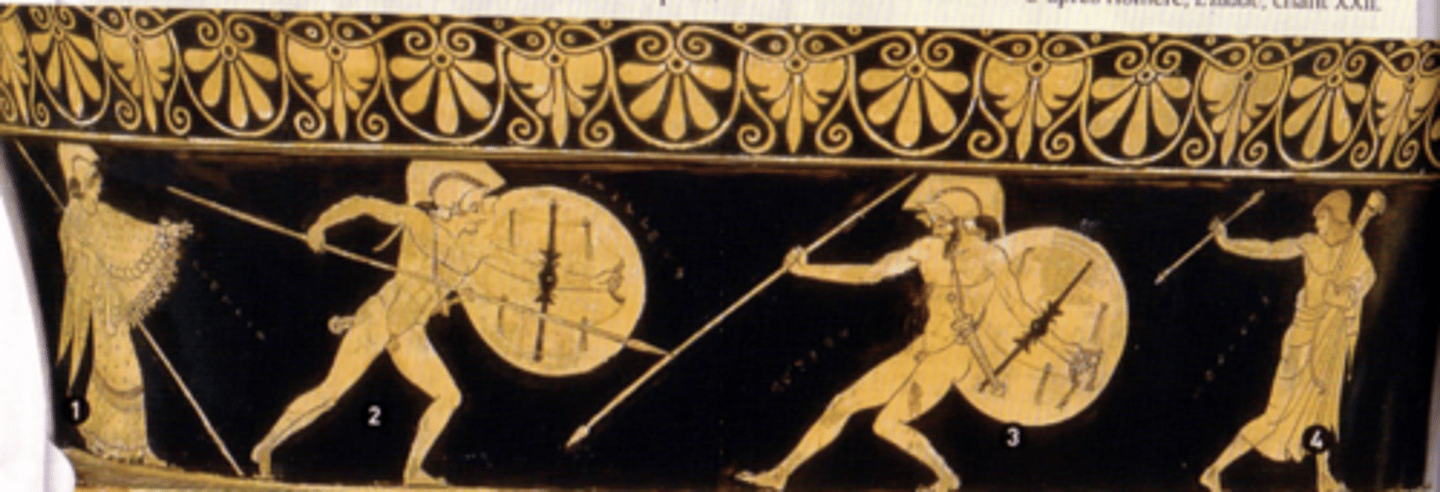
Cloebis and Biton (statues found at Delphi,
c. 580 BC - archaic period)
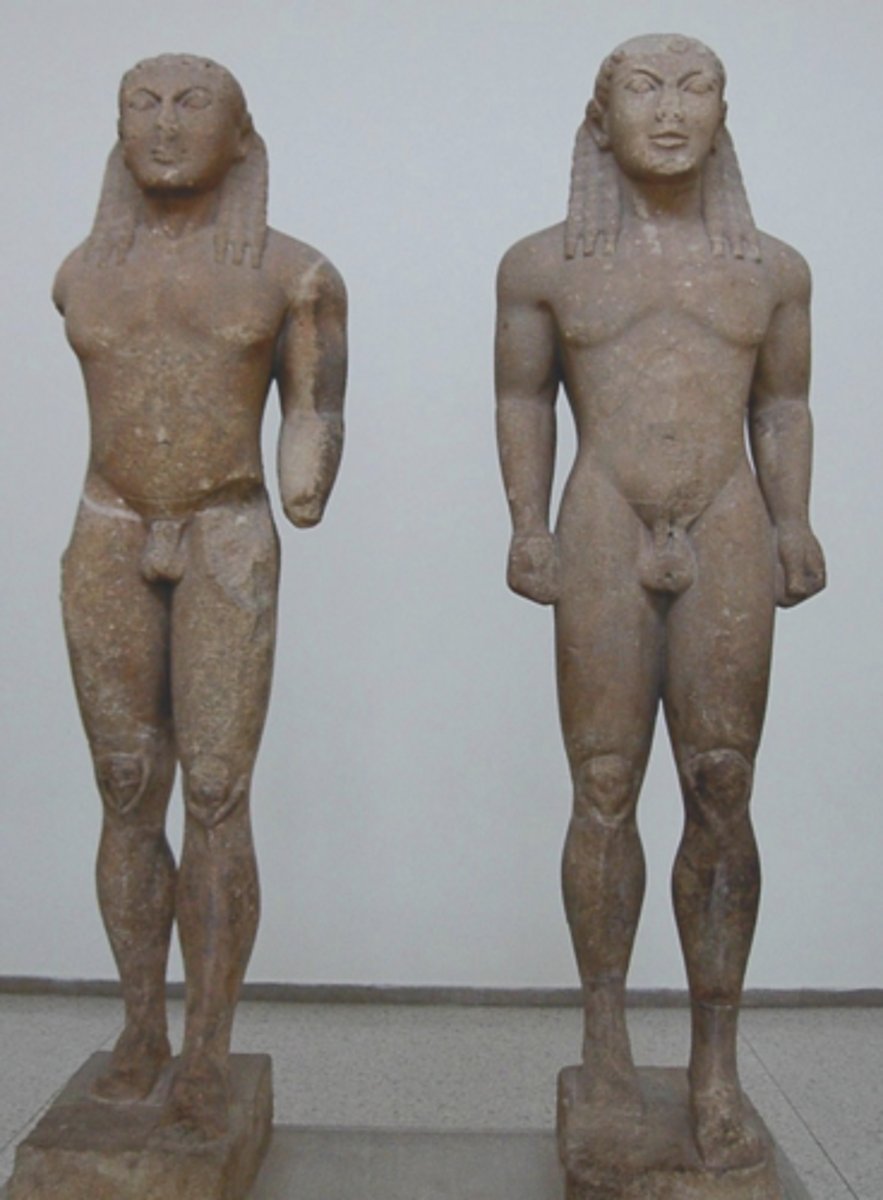
Syncretism
combination of different beliefs or
practices
Athena & Poseidon (neck amphora of Amasis
Painter, c. 540-530 BC - archaic period)
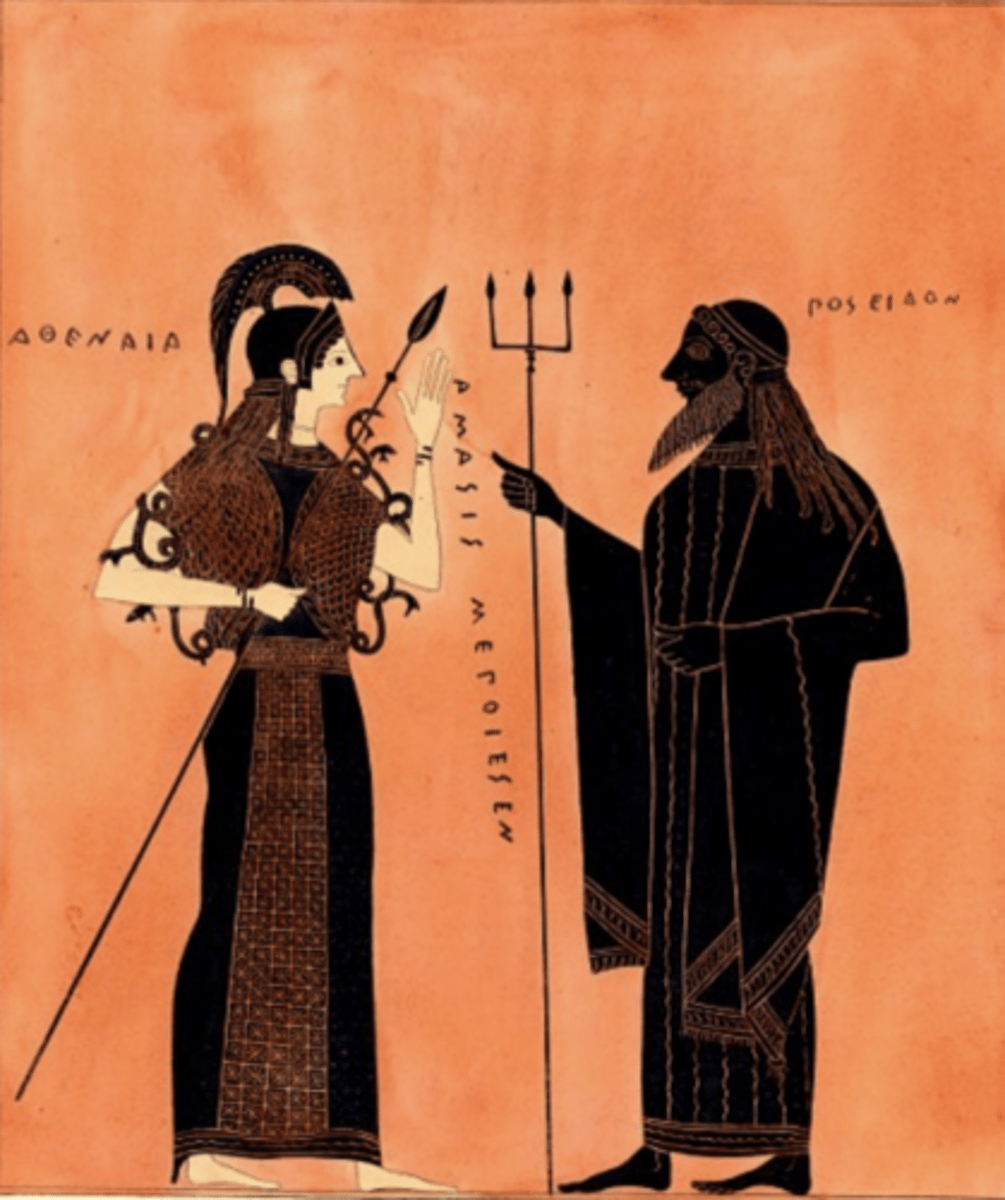
Elgin Marbles: The Olympian
Gods (Parthenon, East Frieze ,
c. 446-440 BC - classical period)
